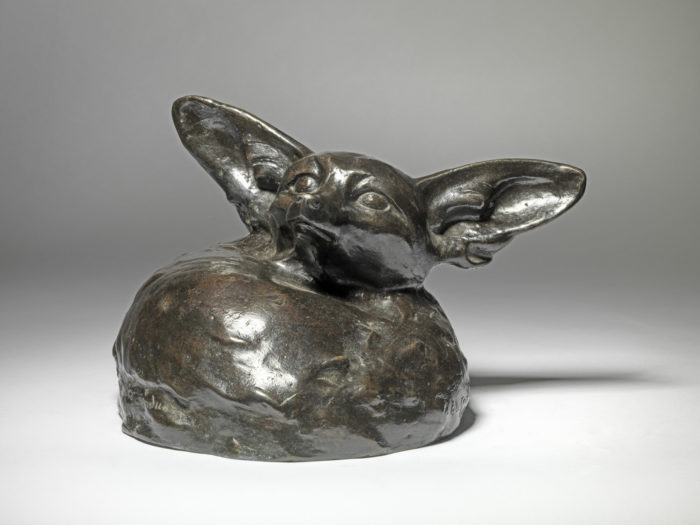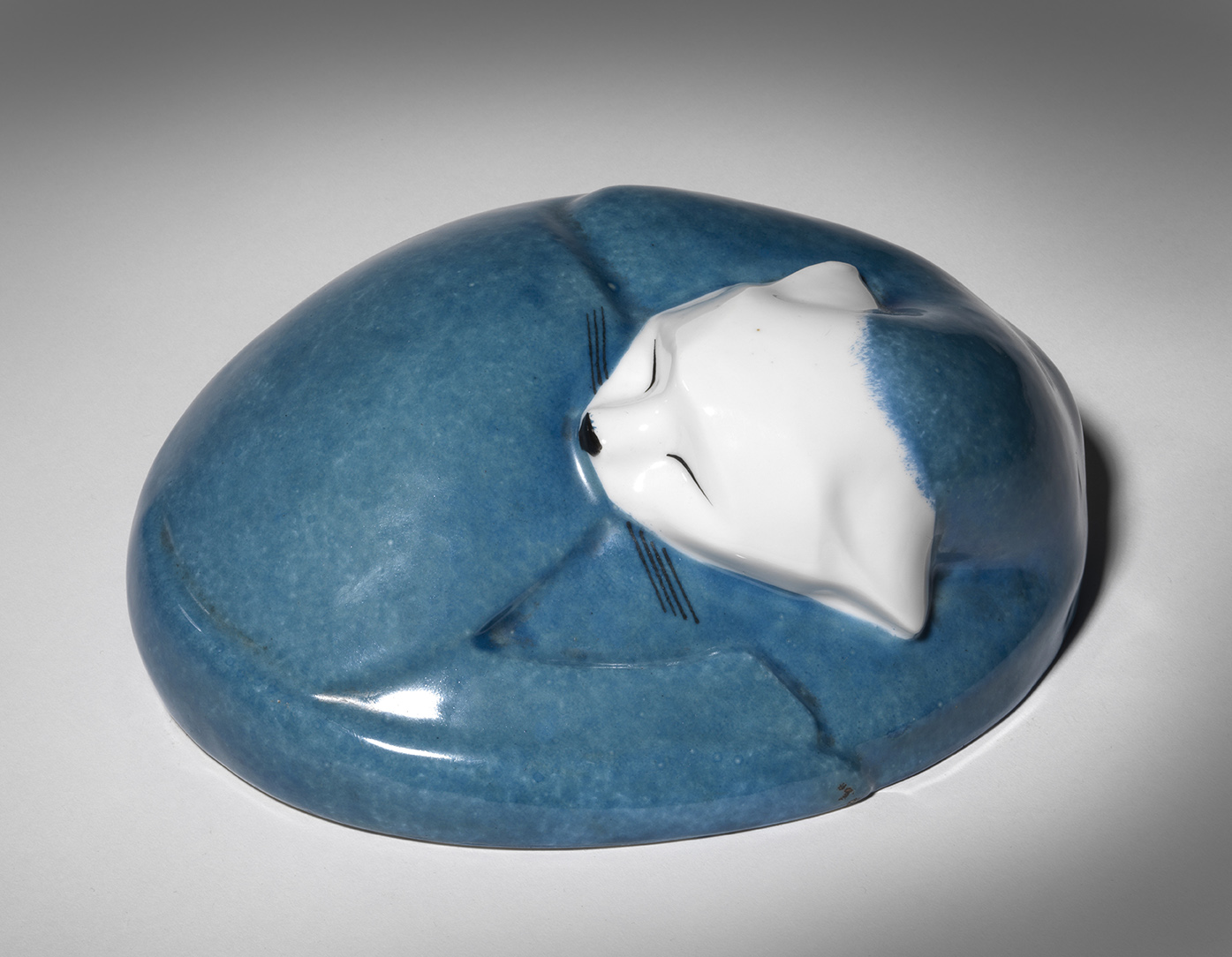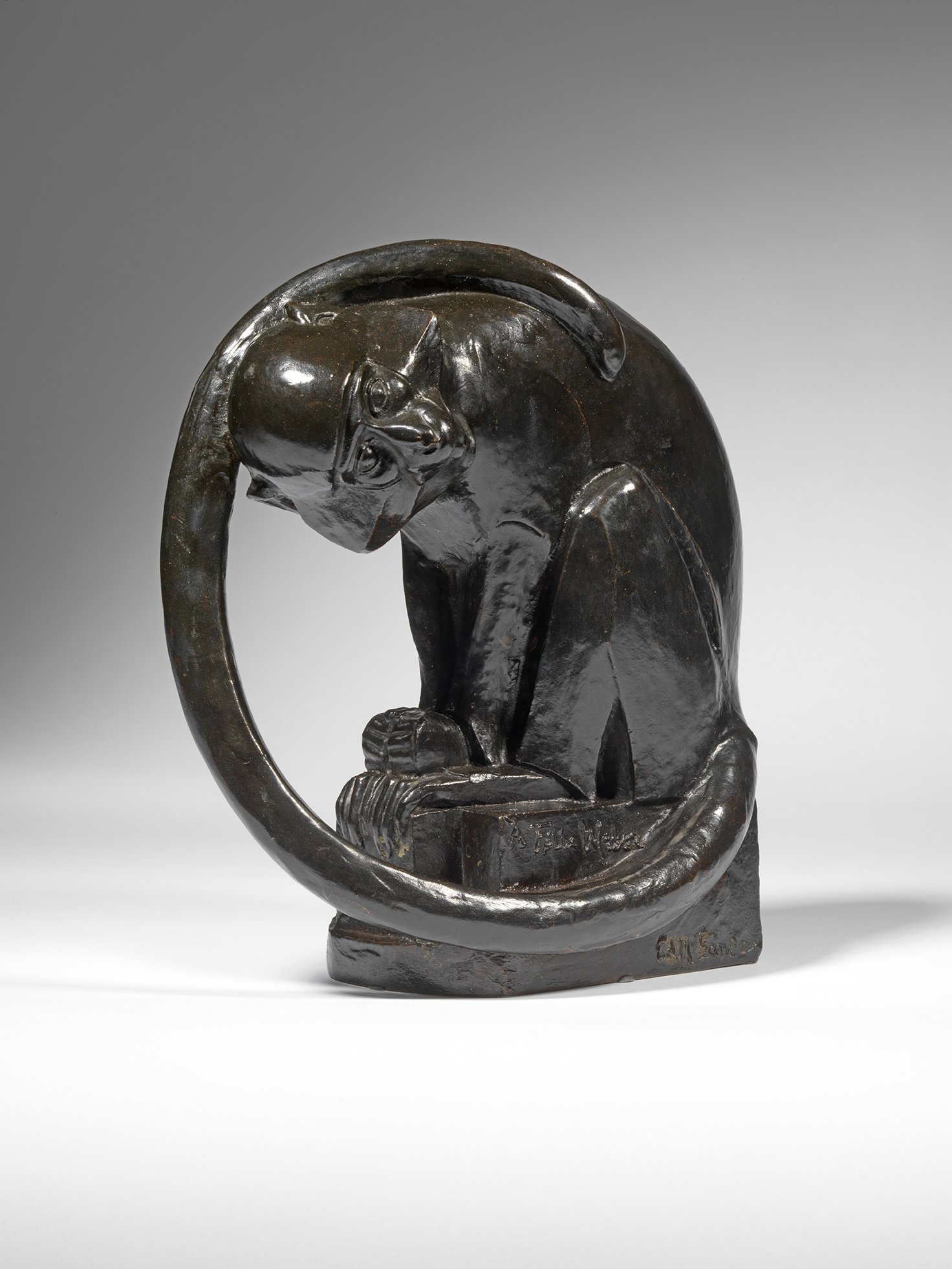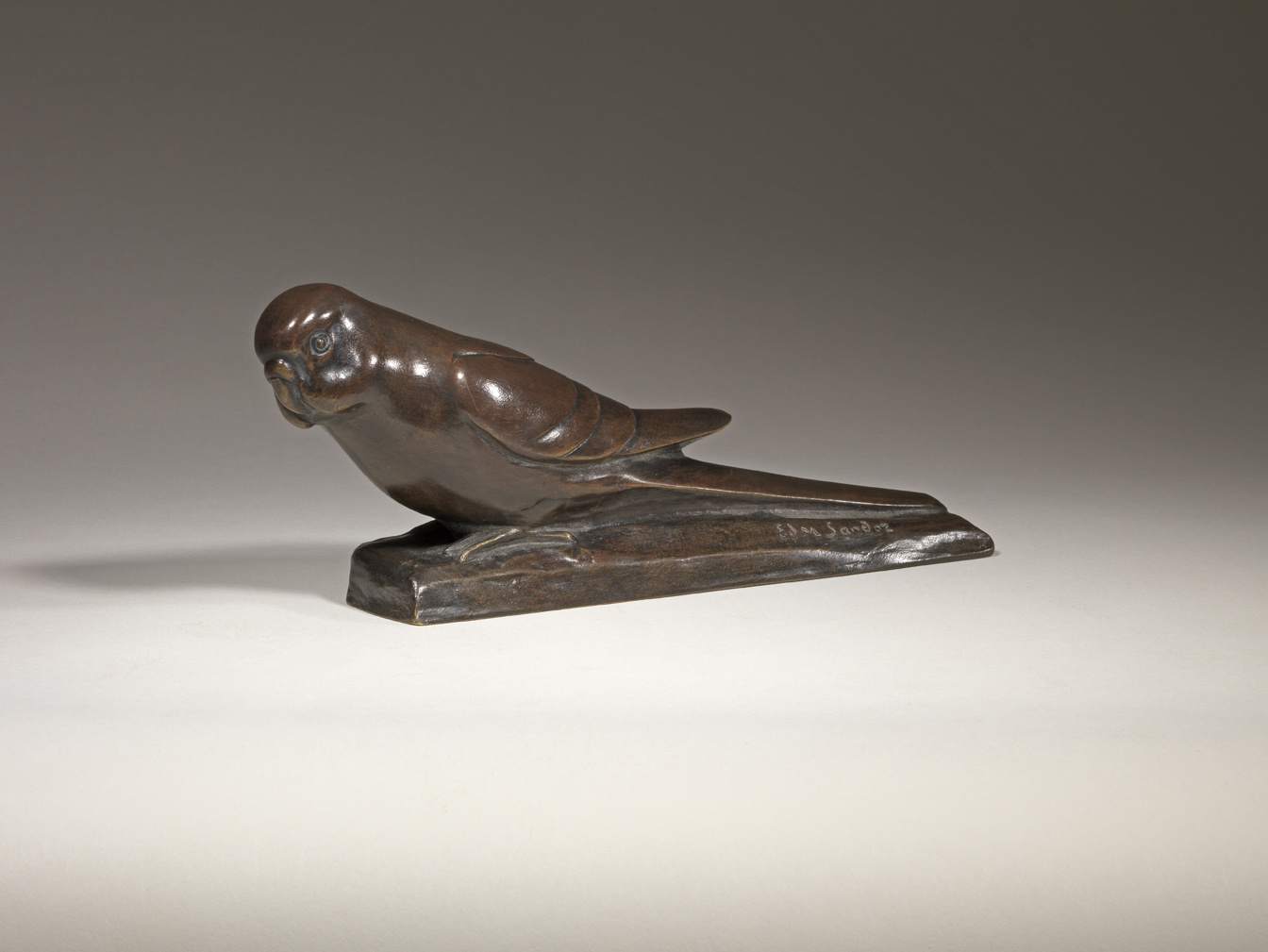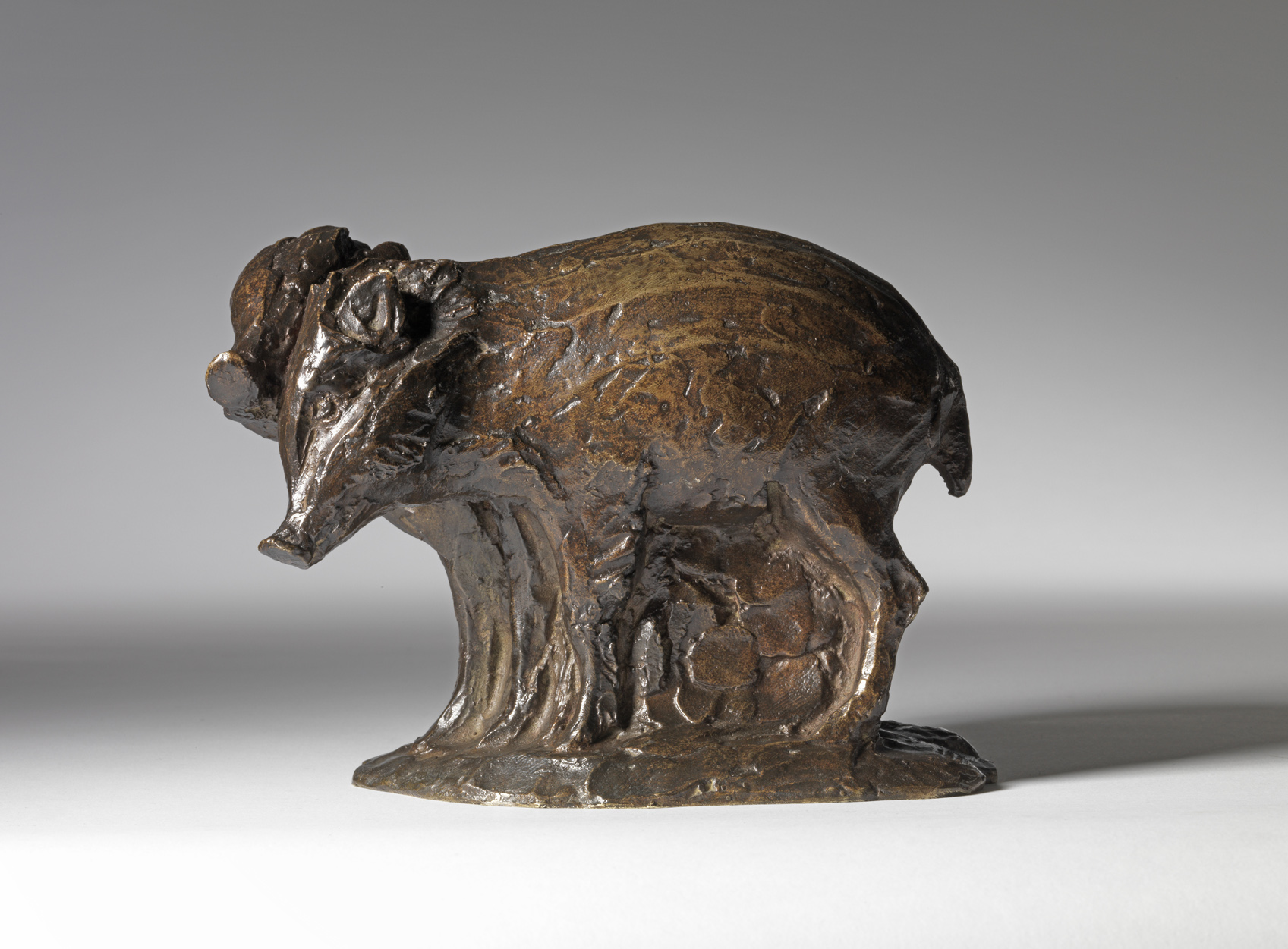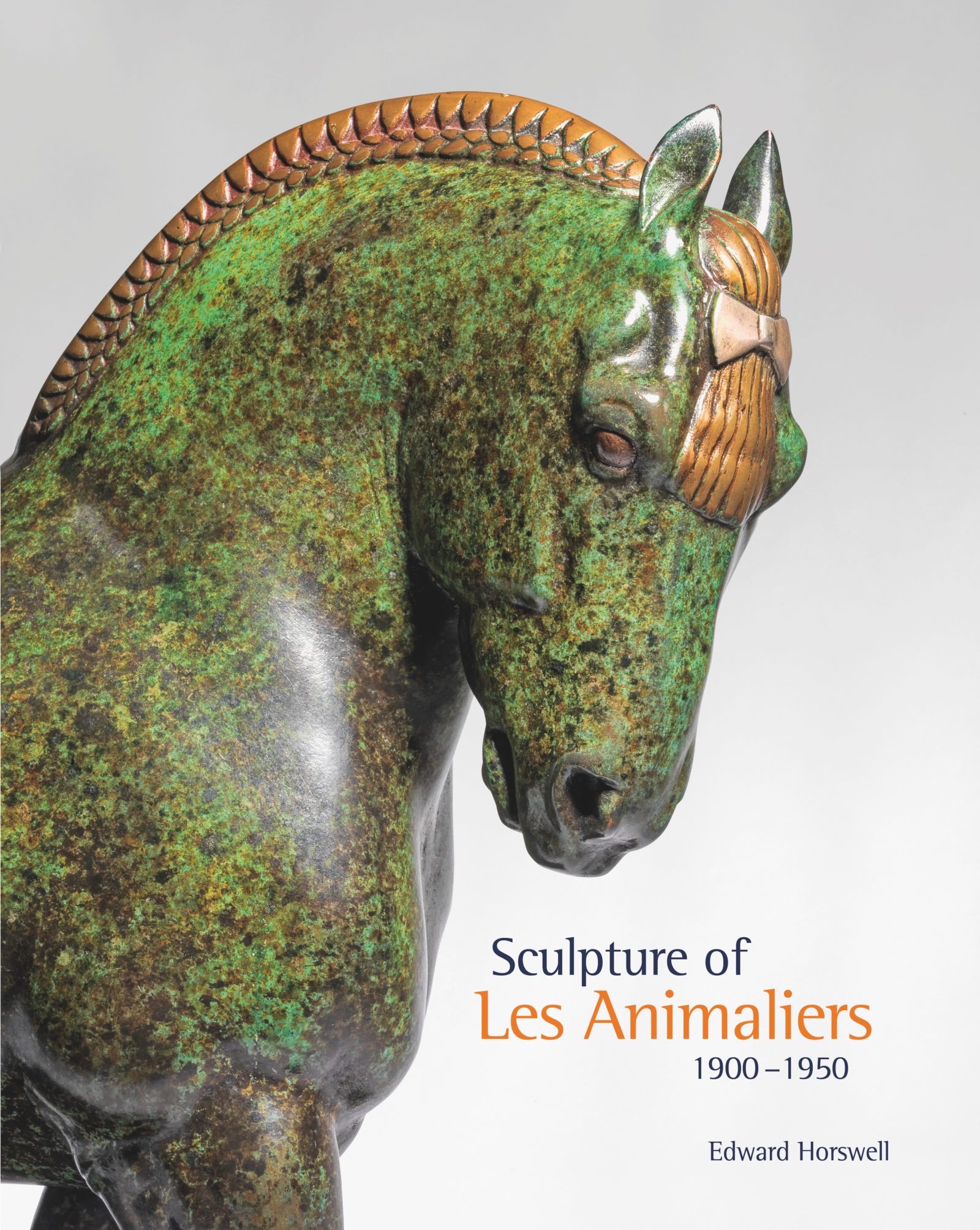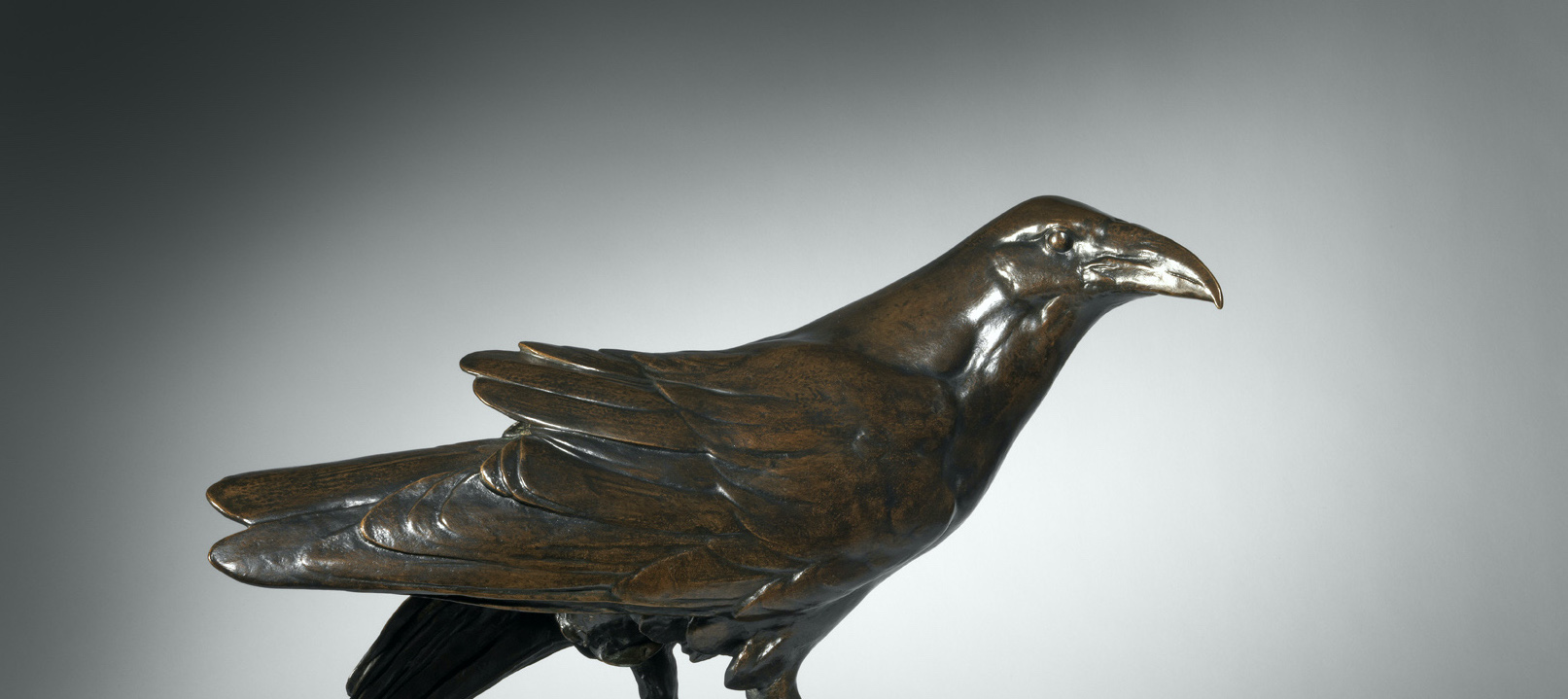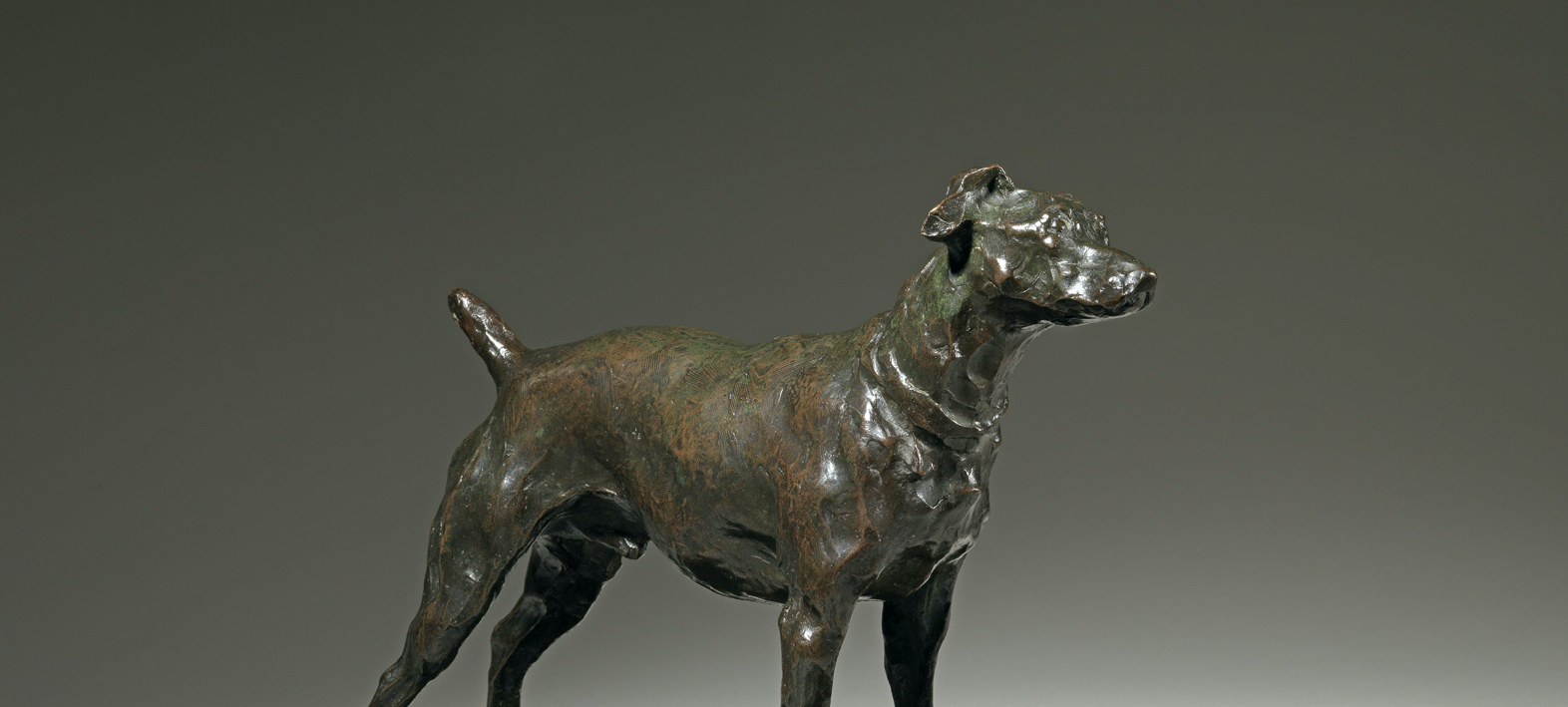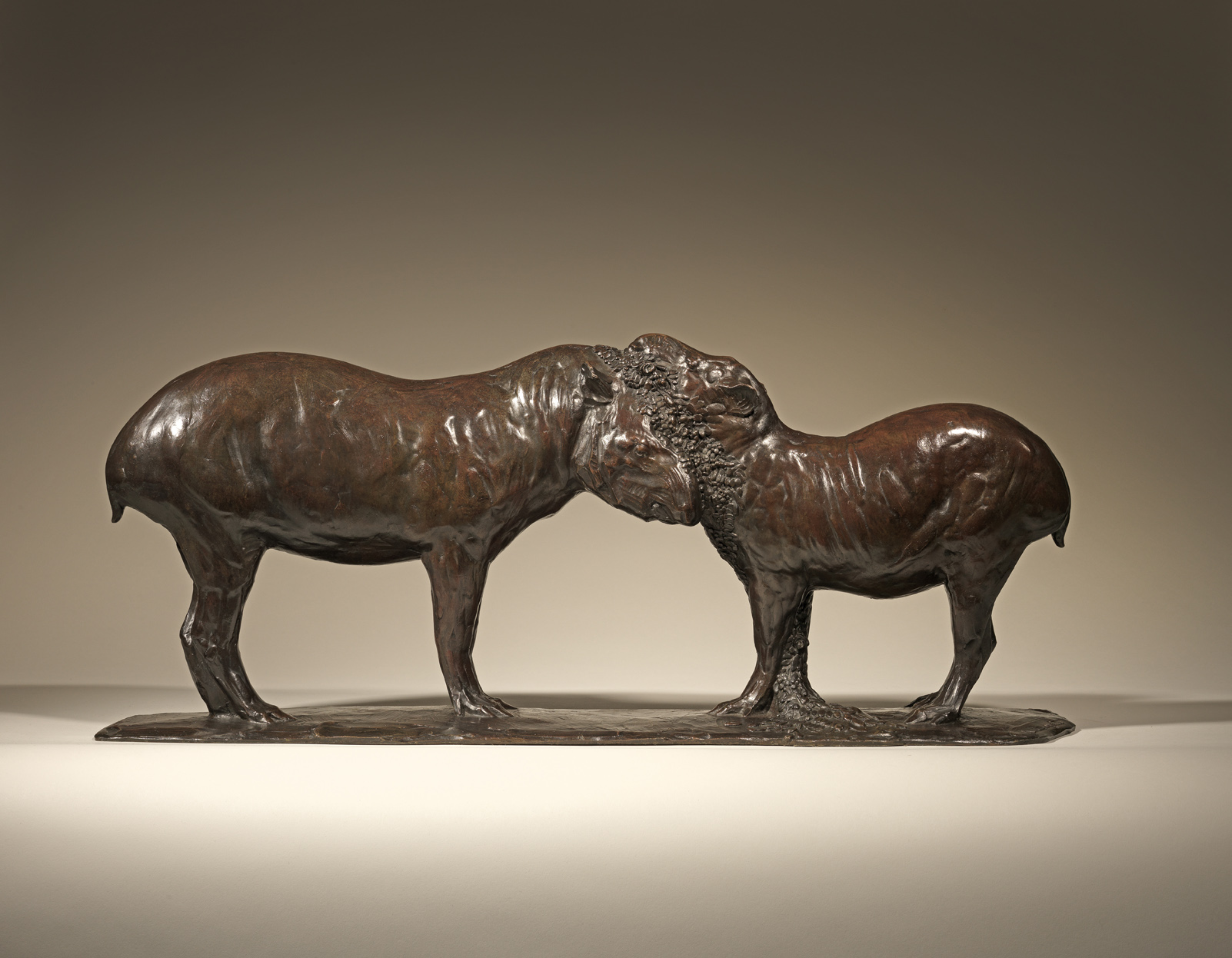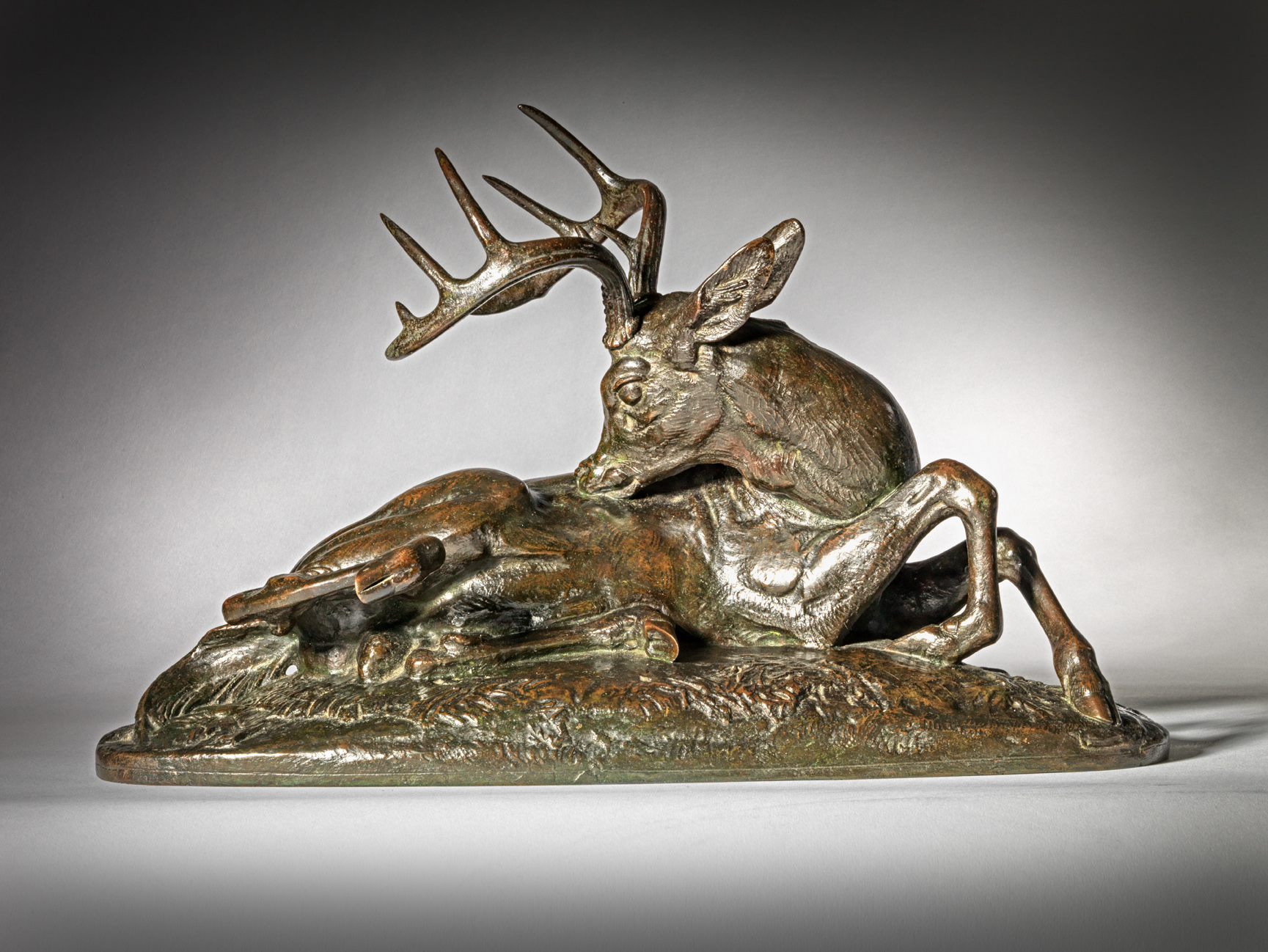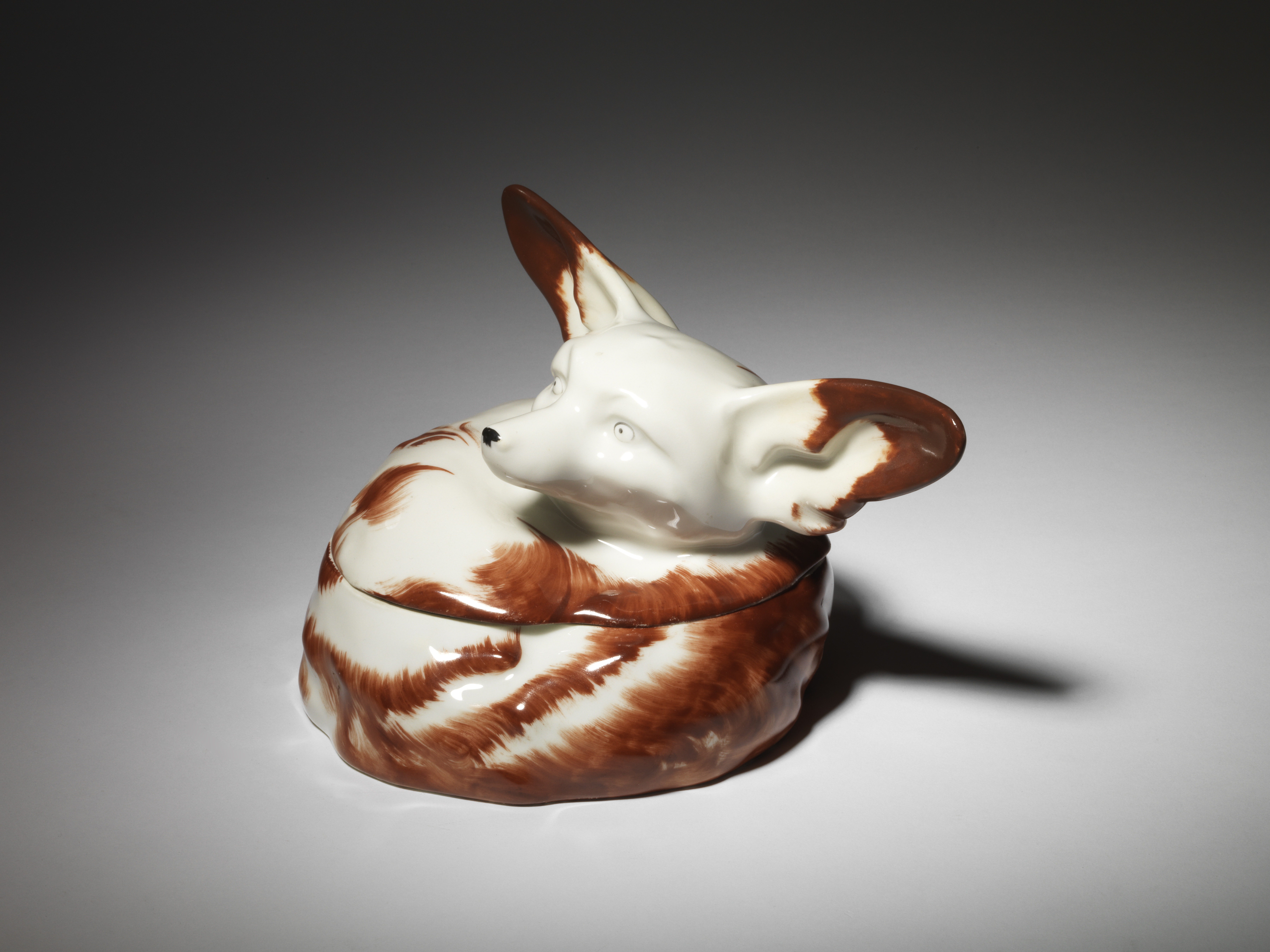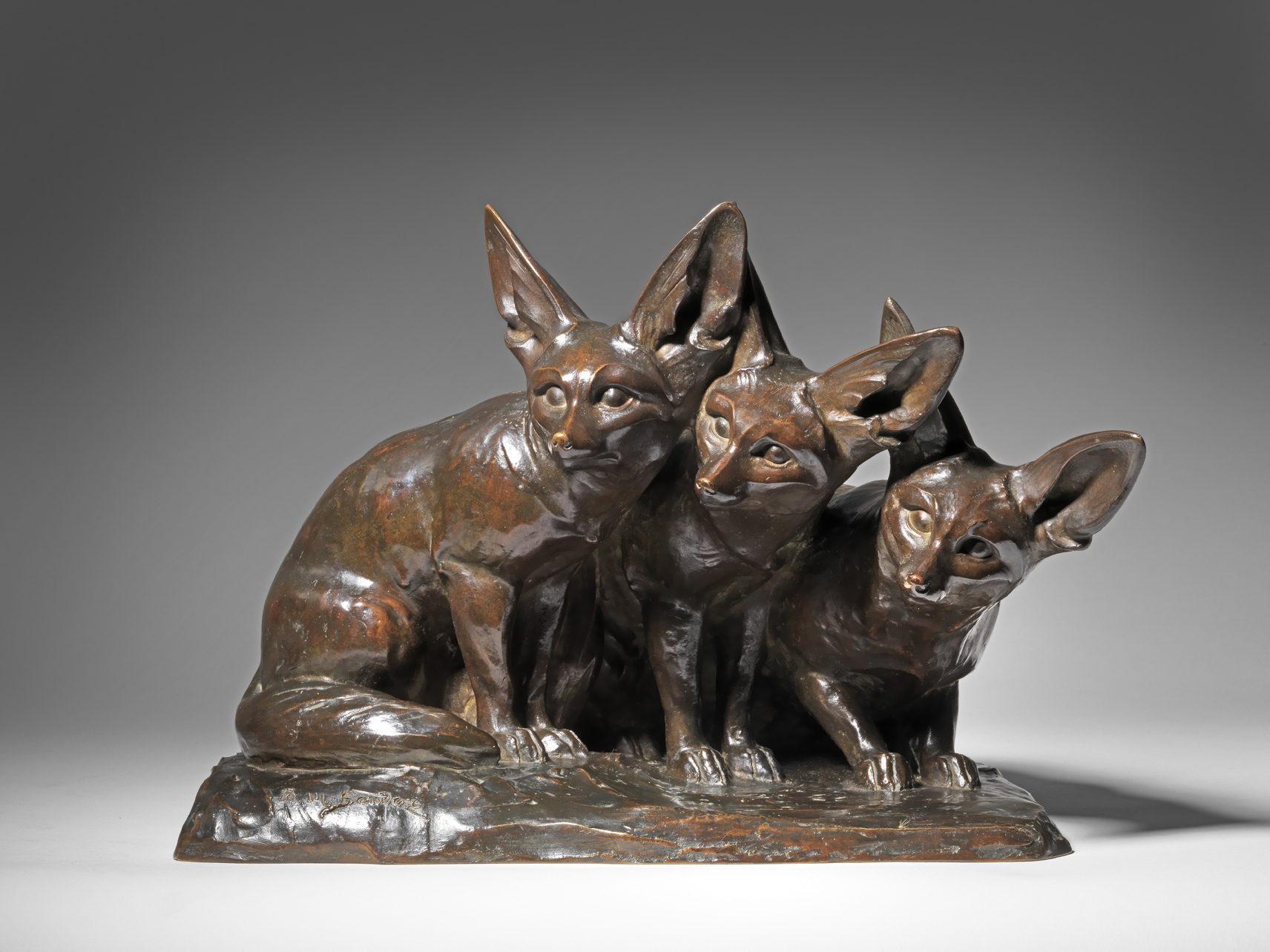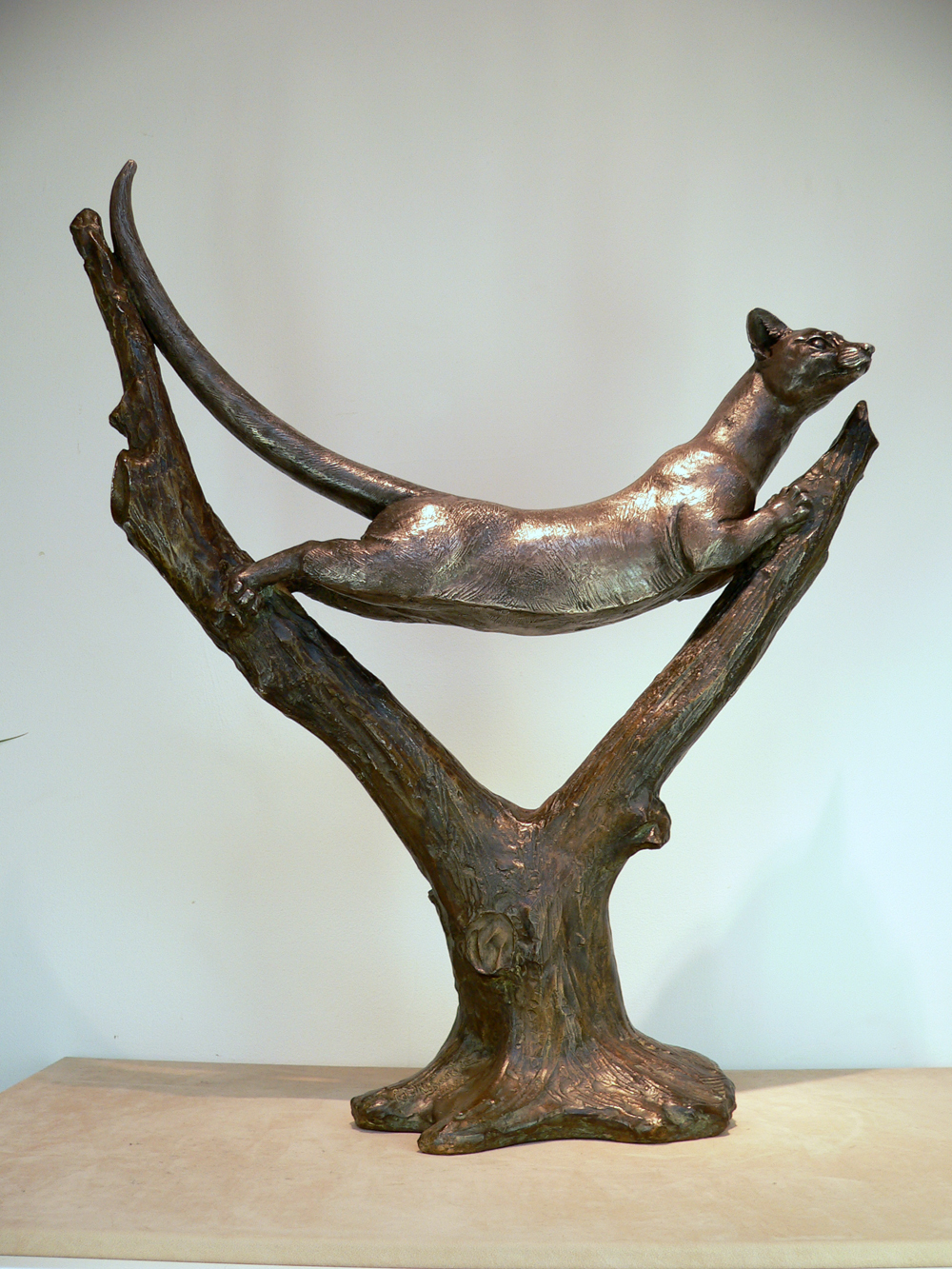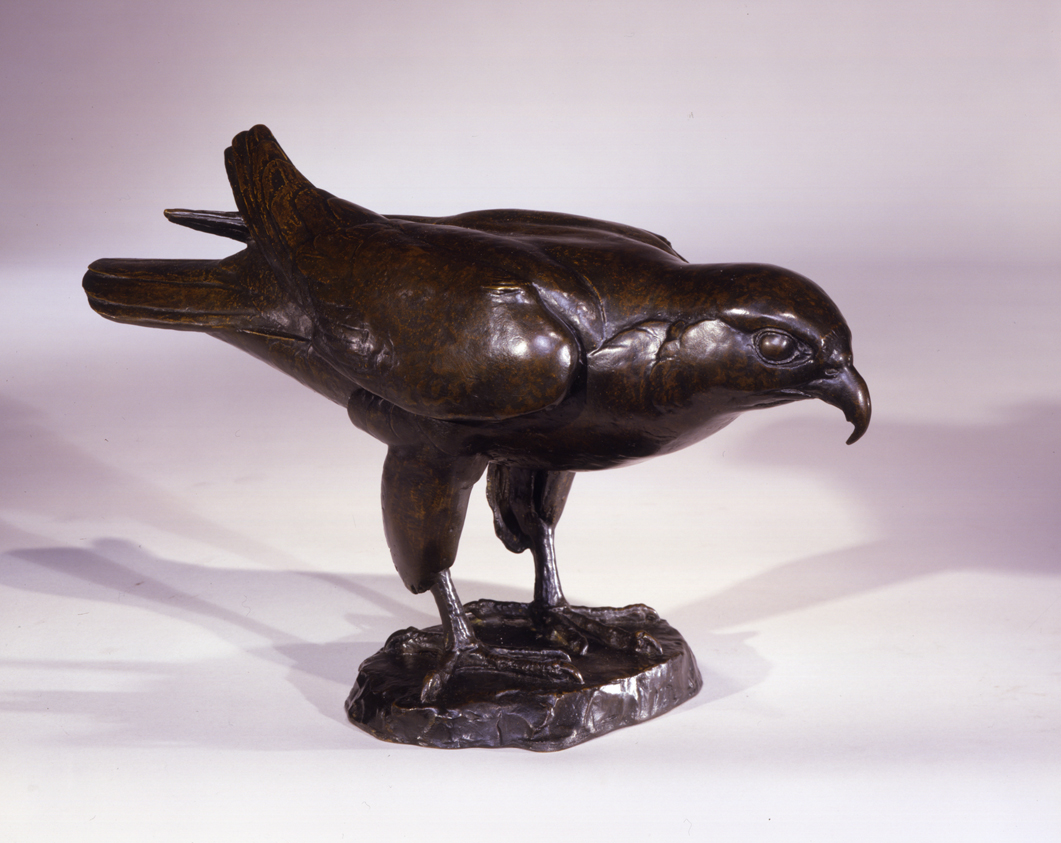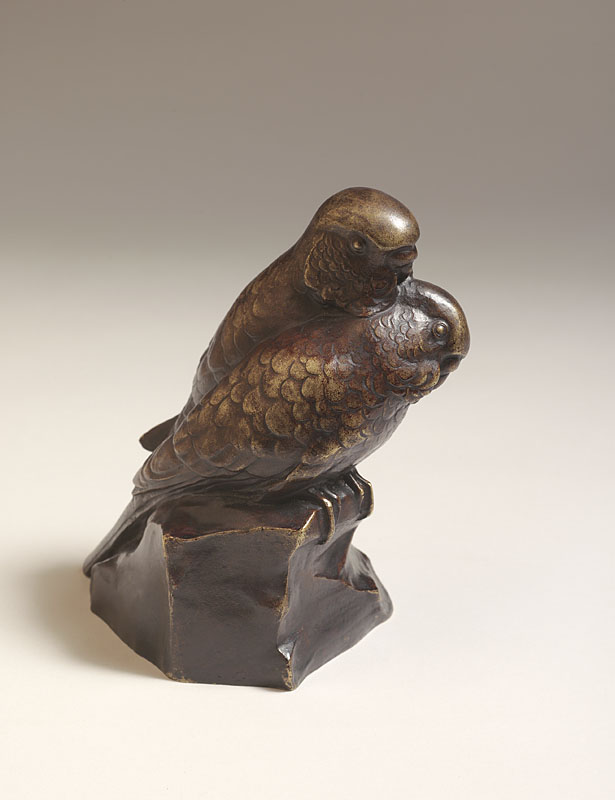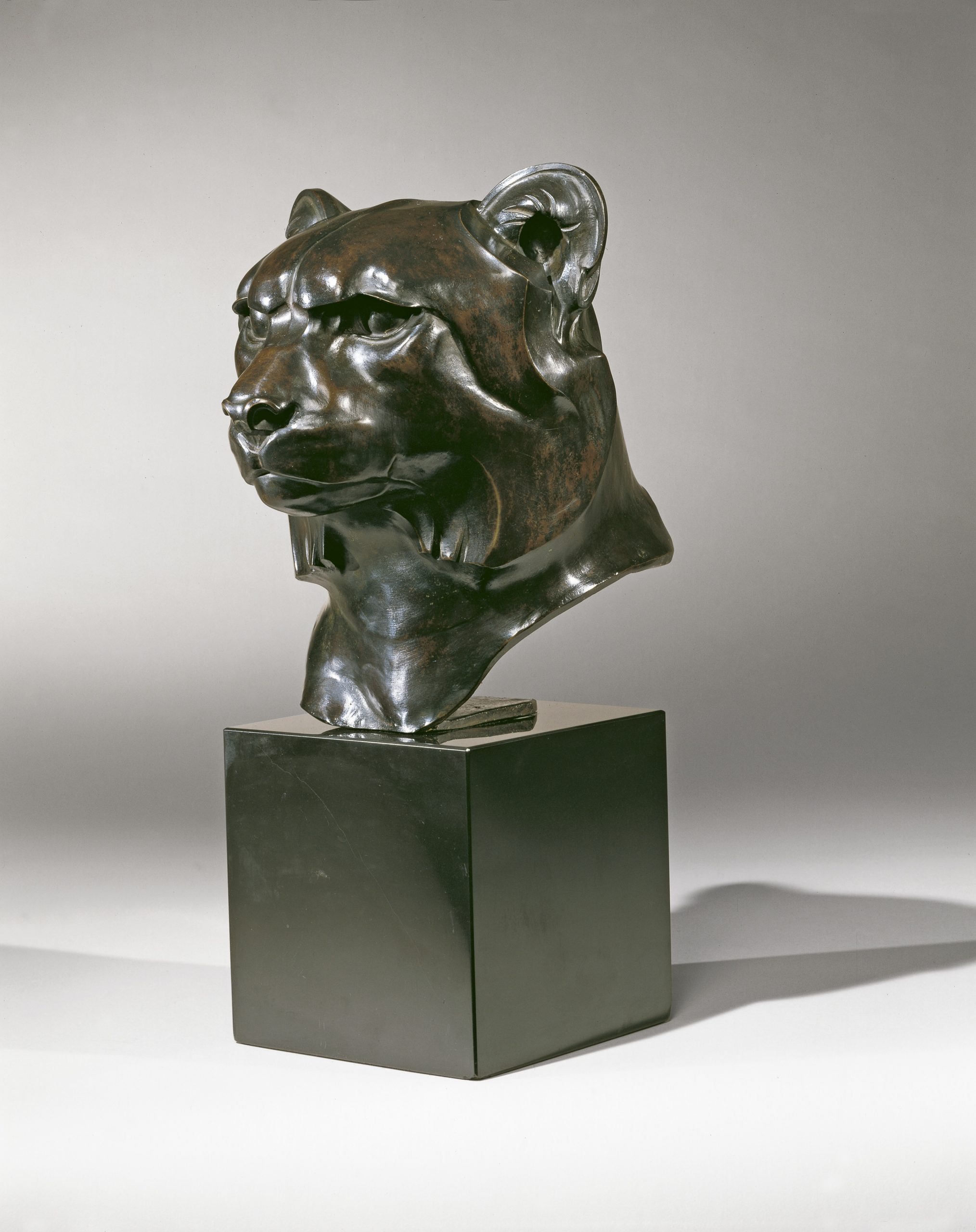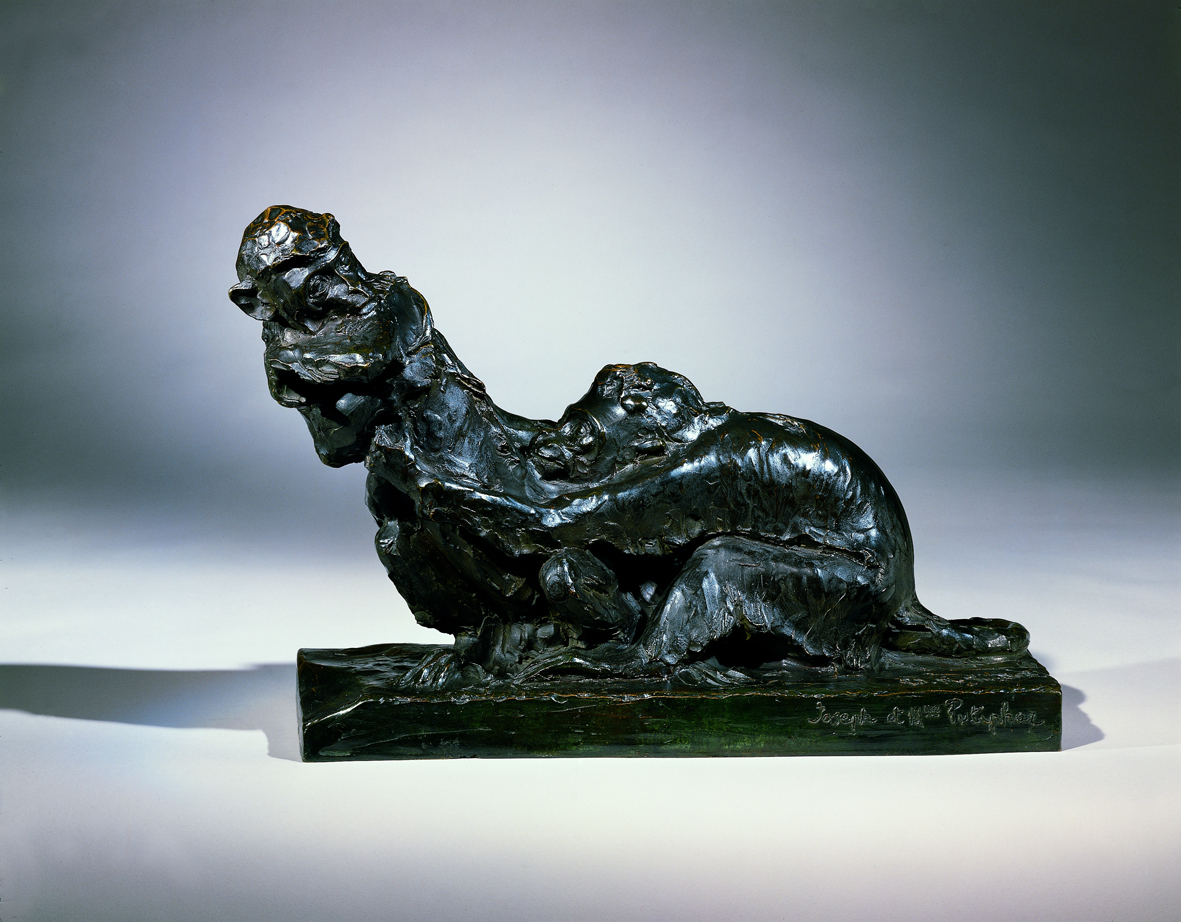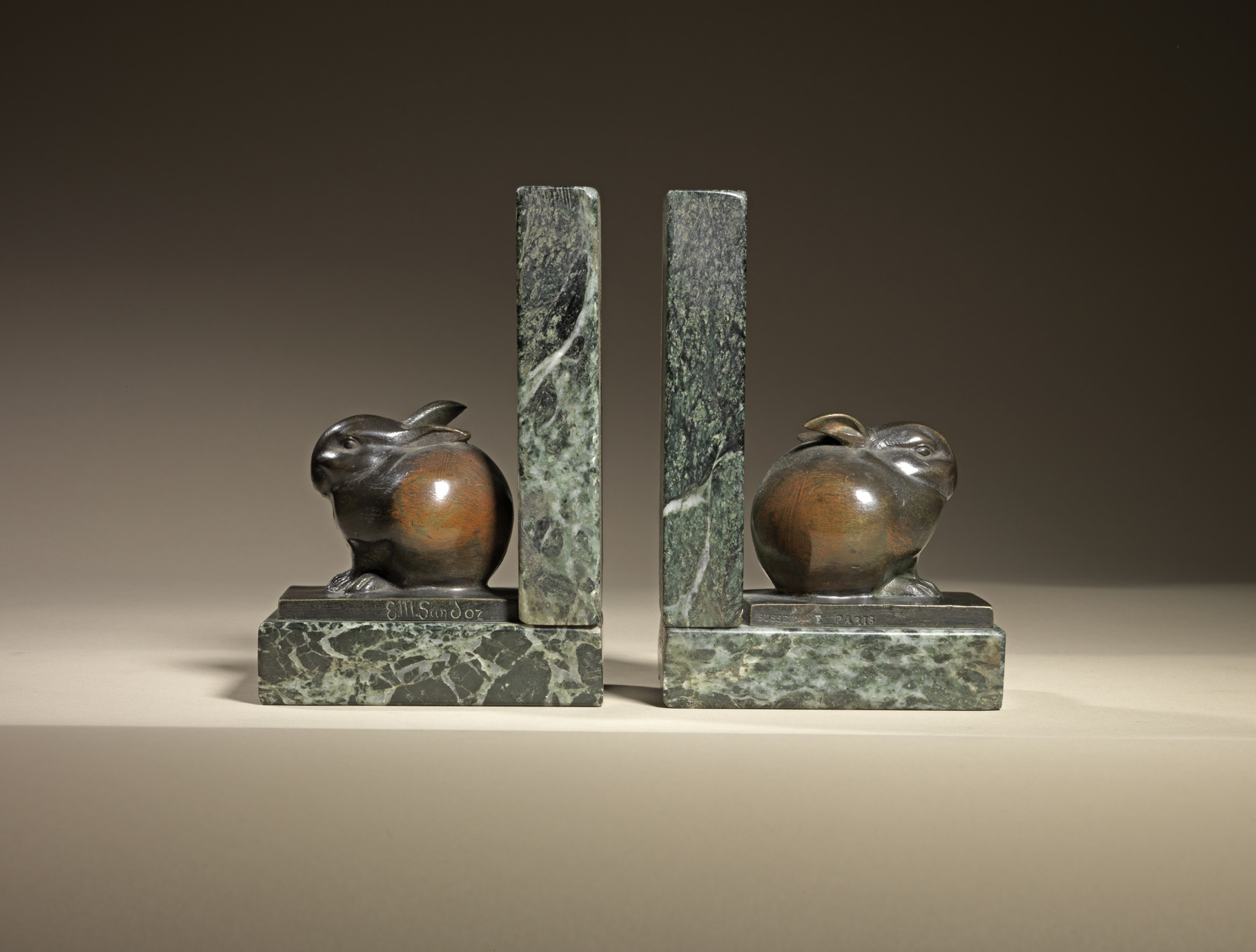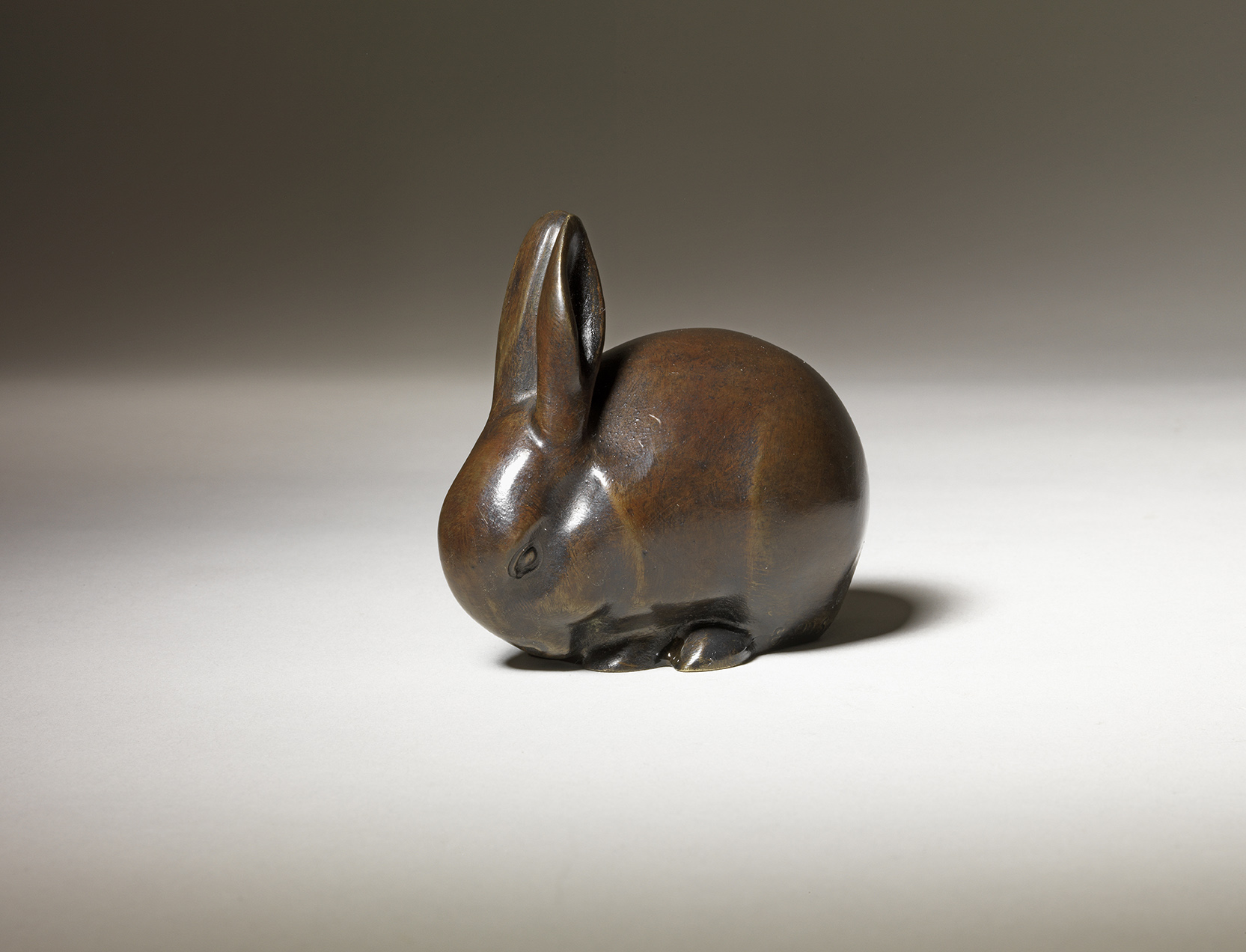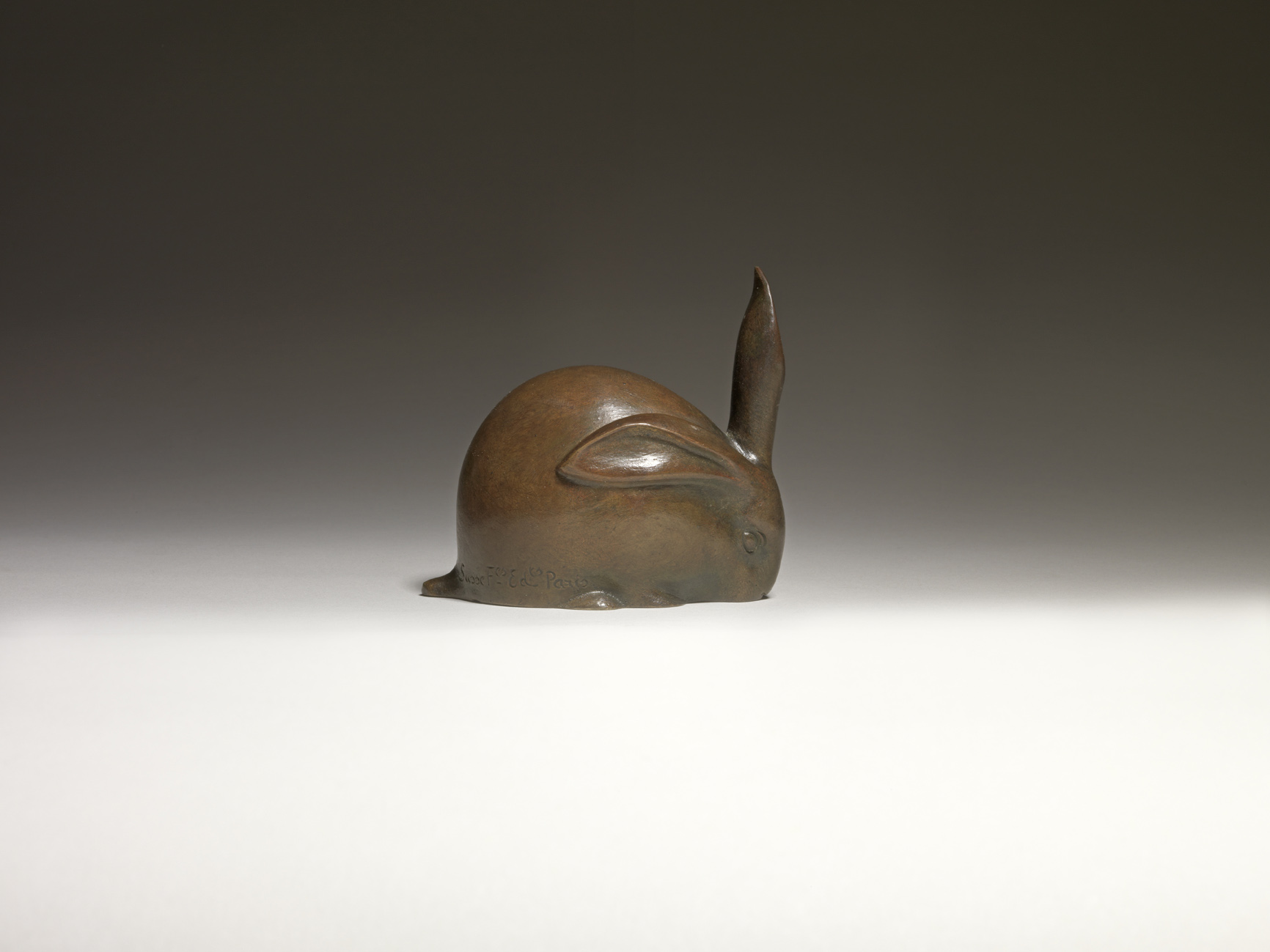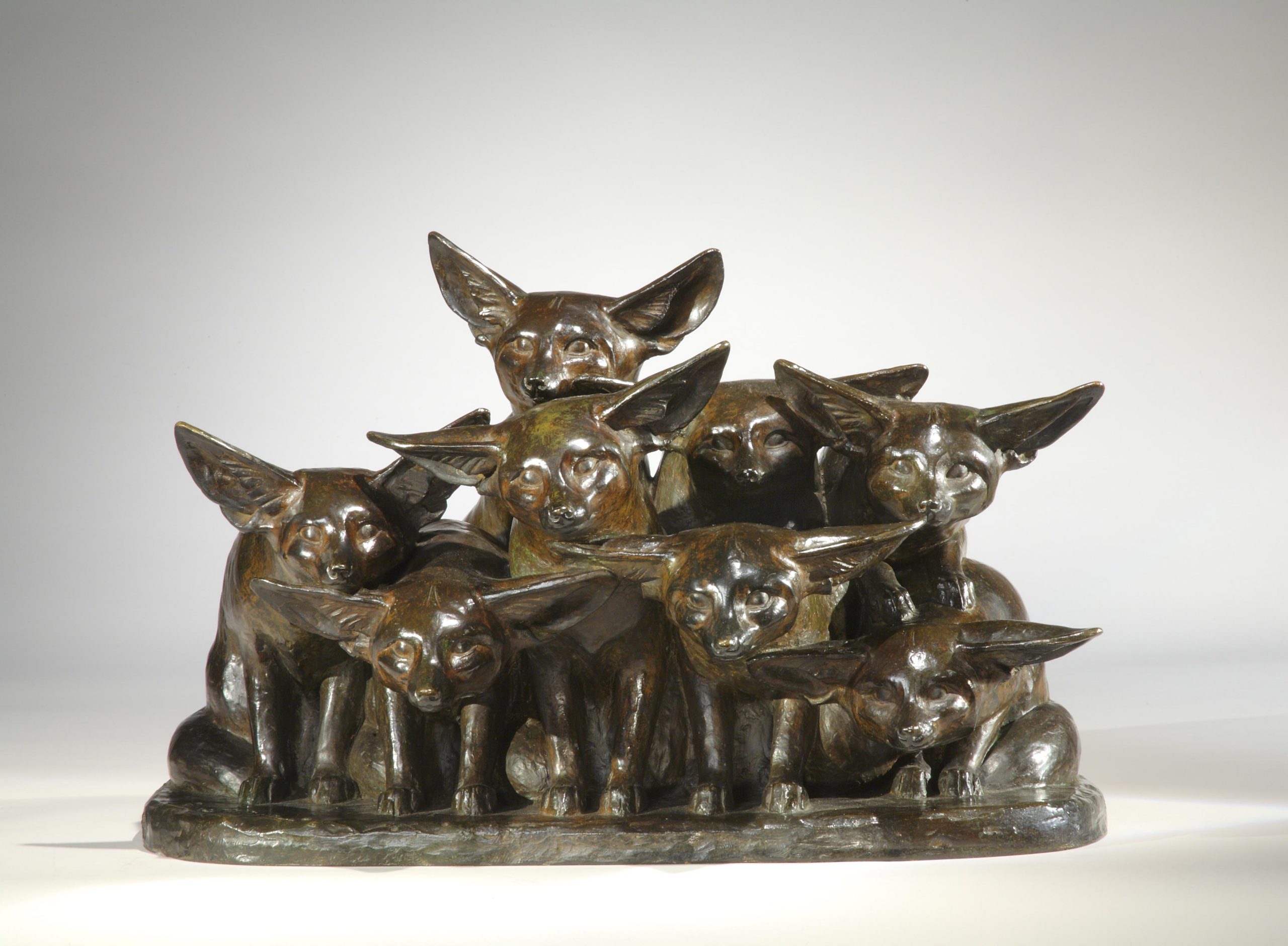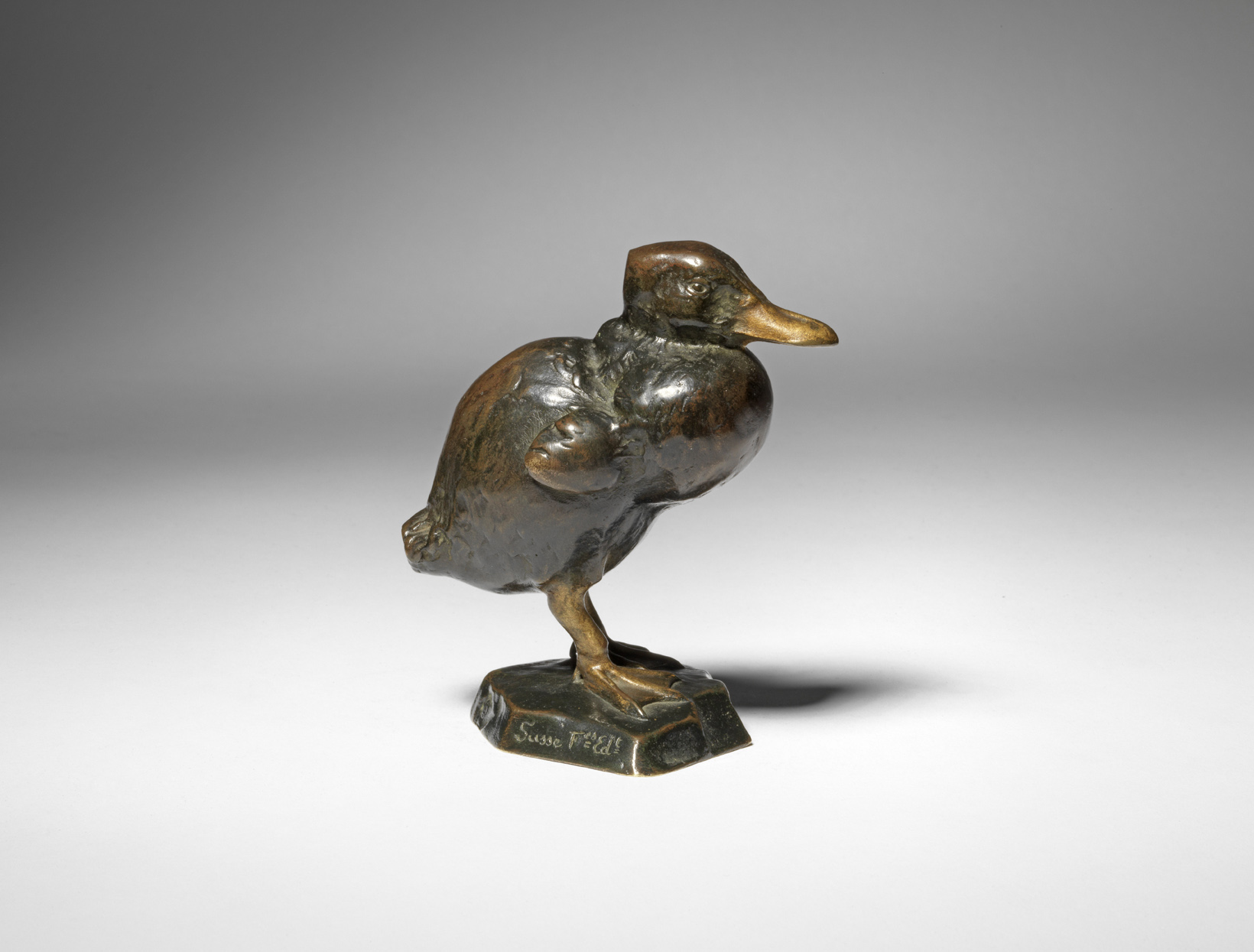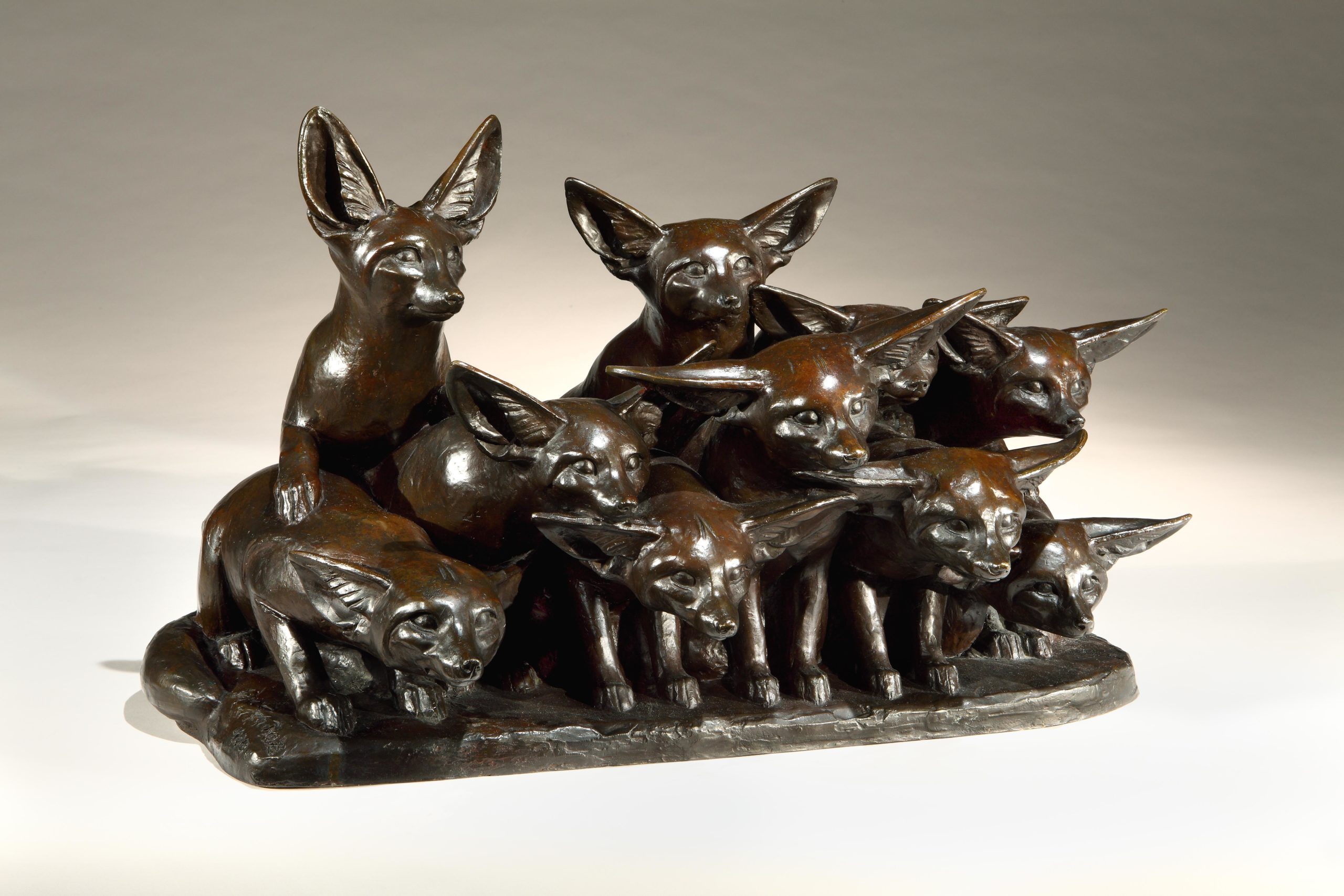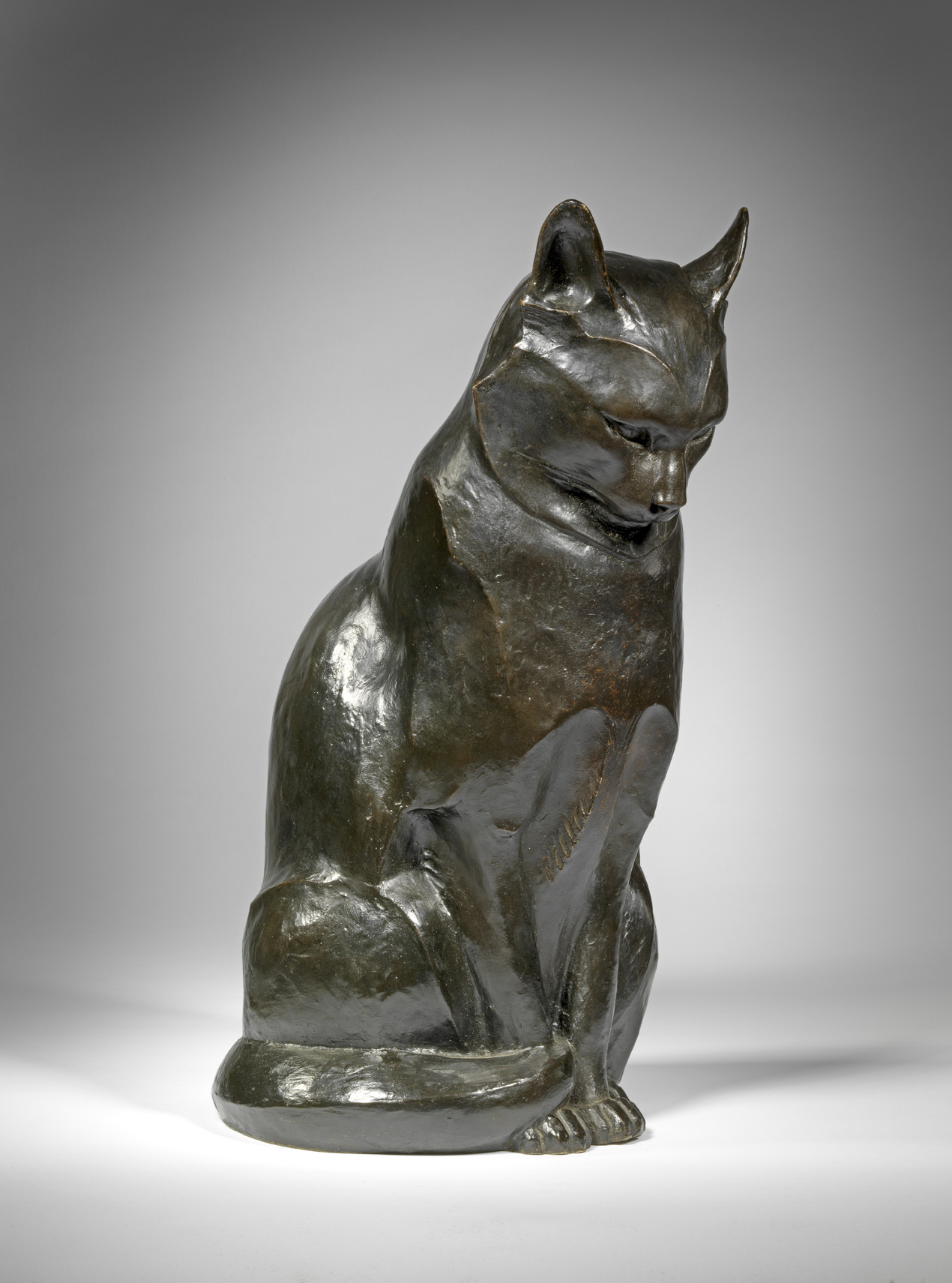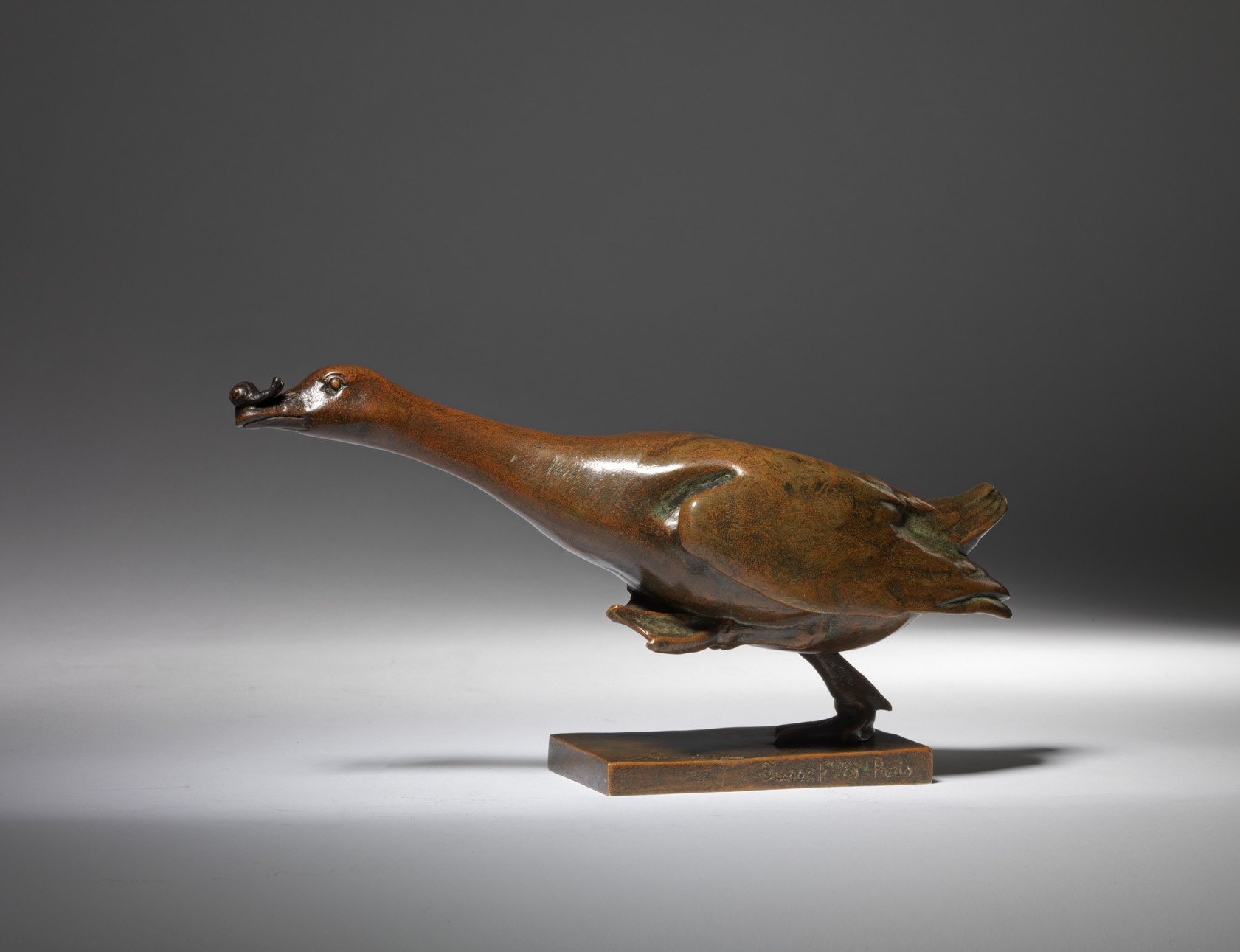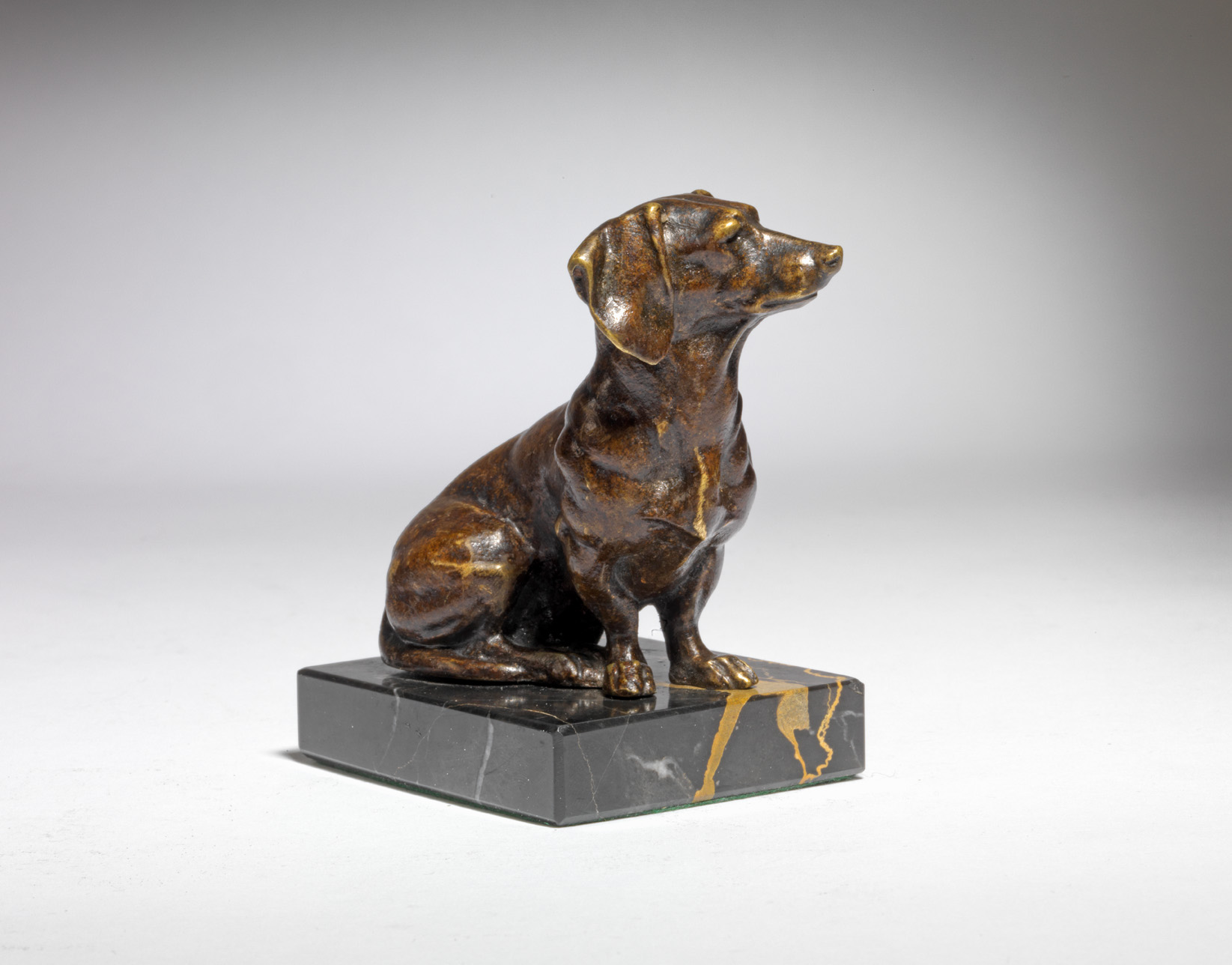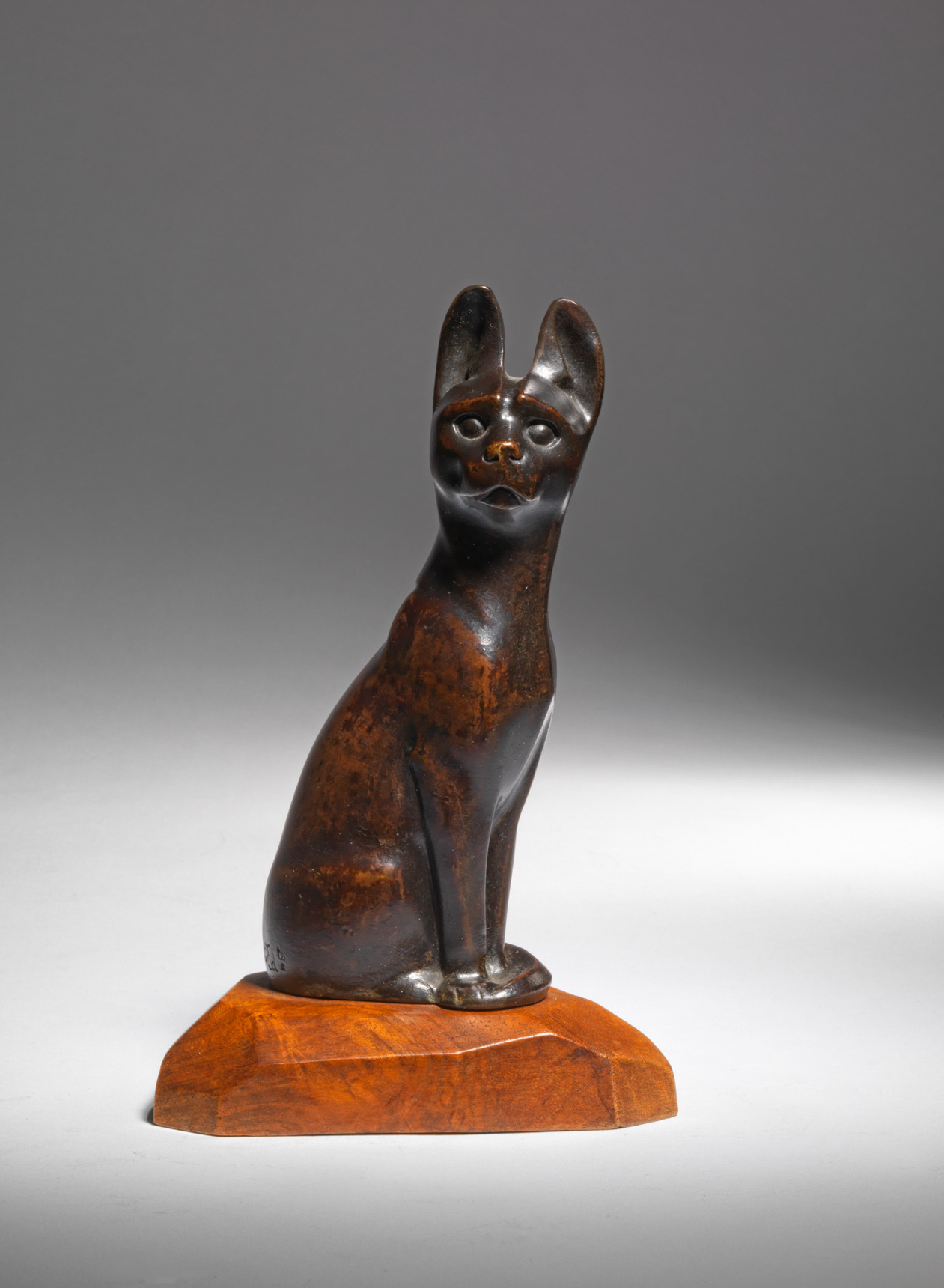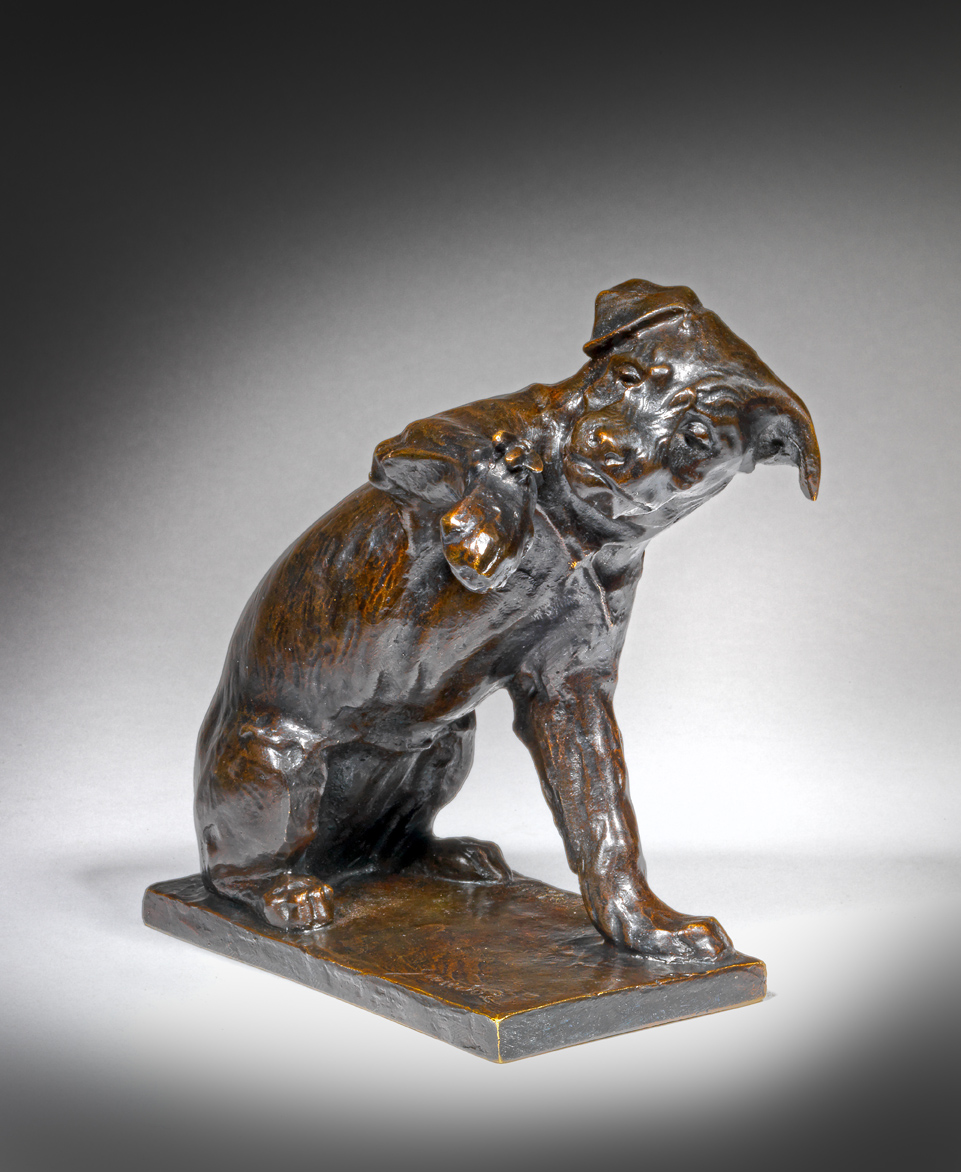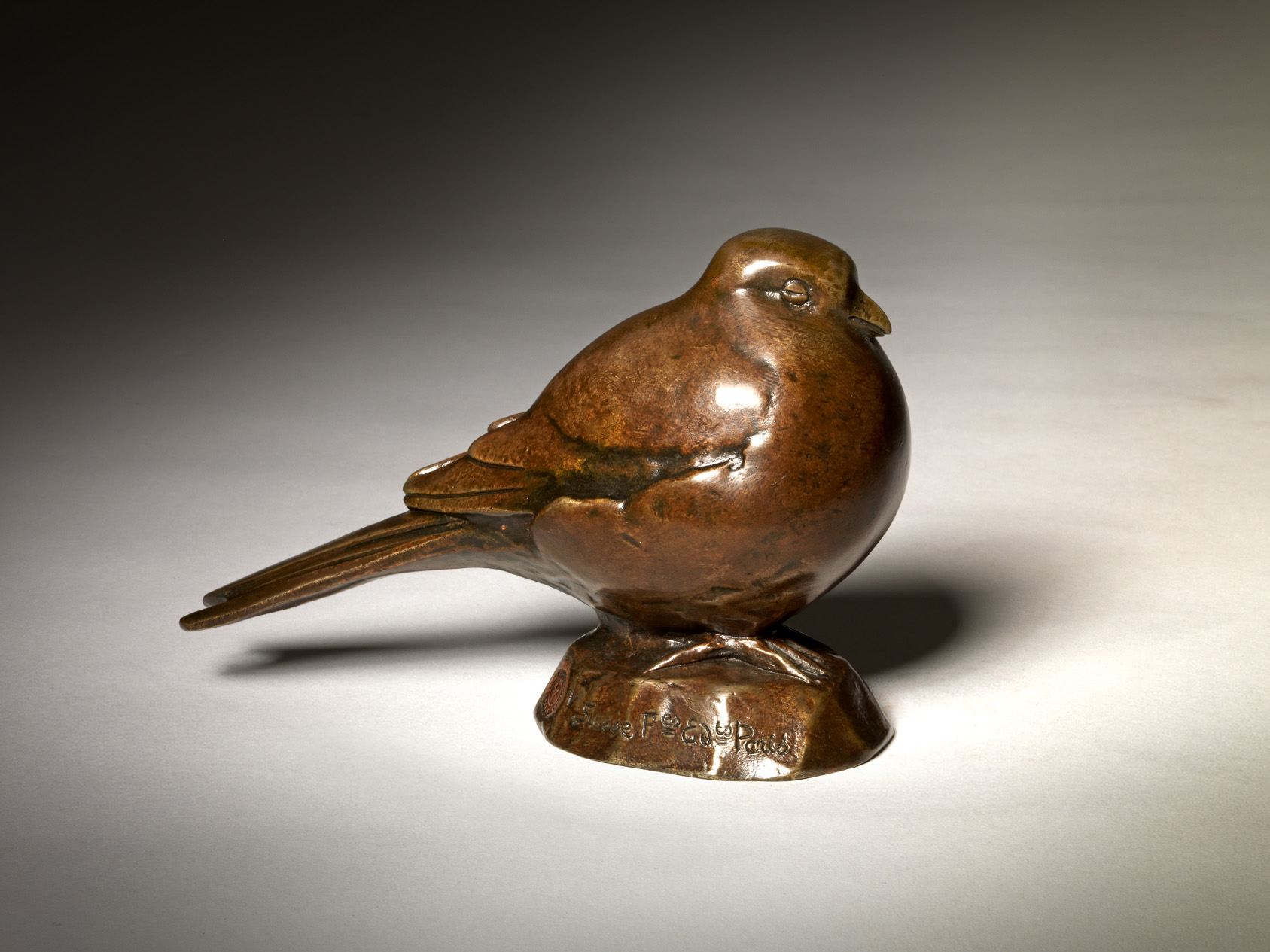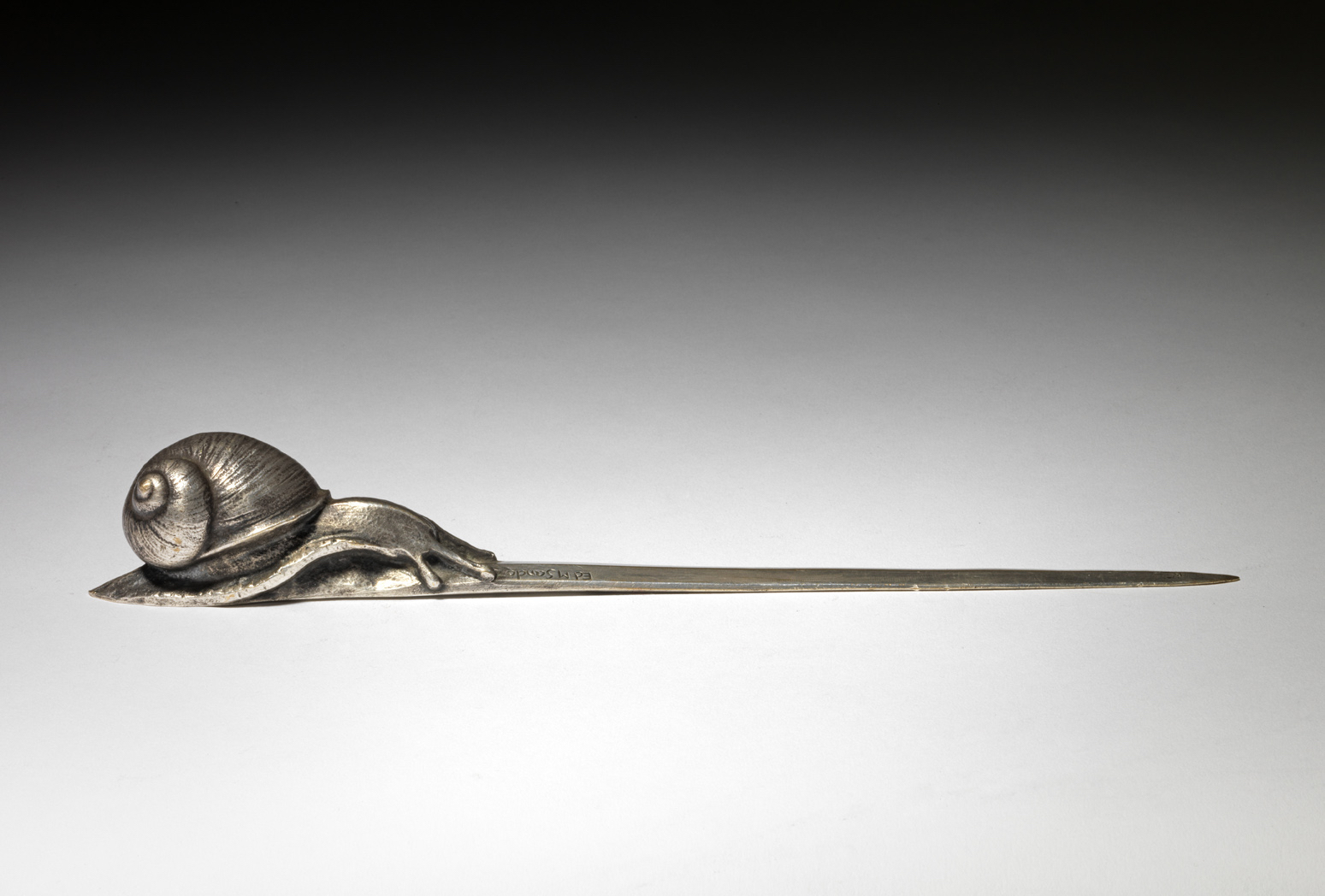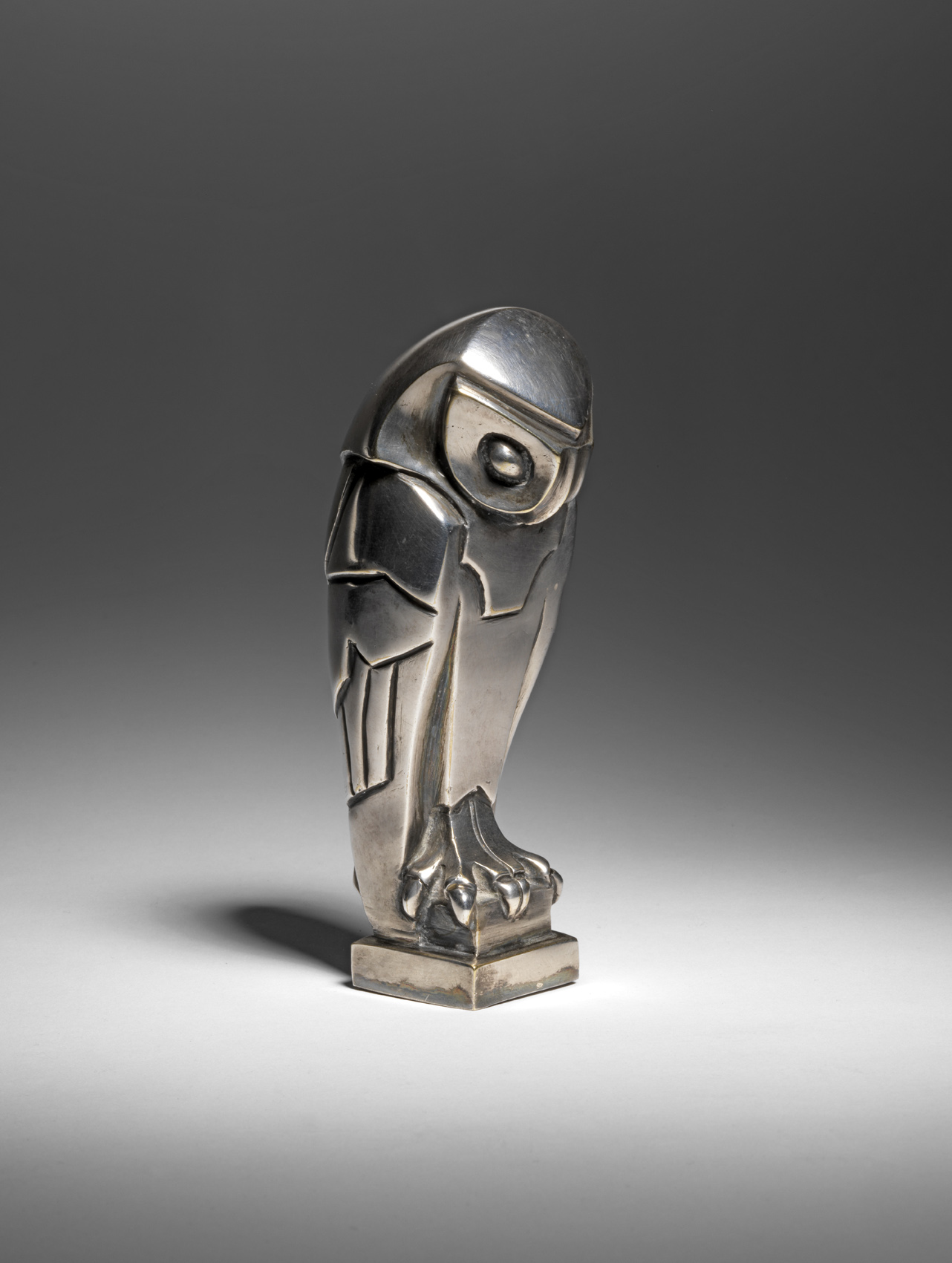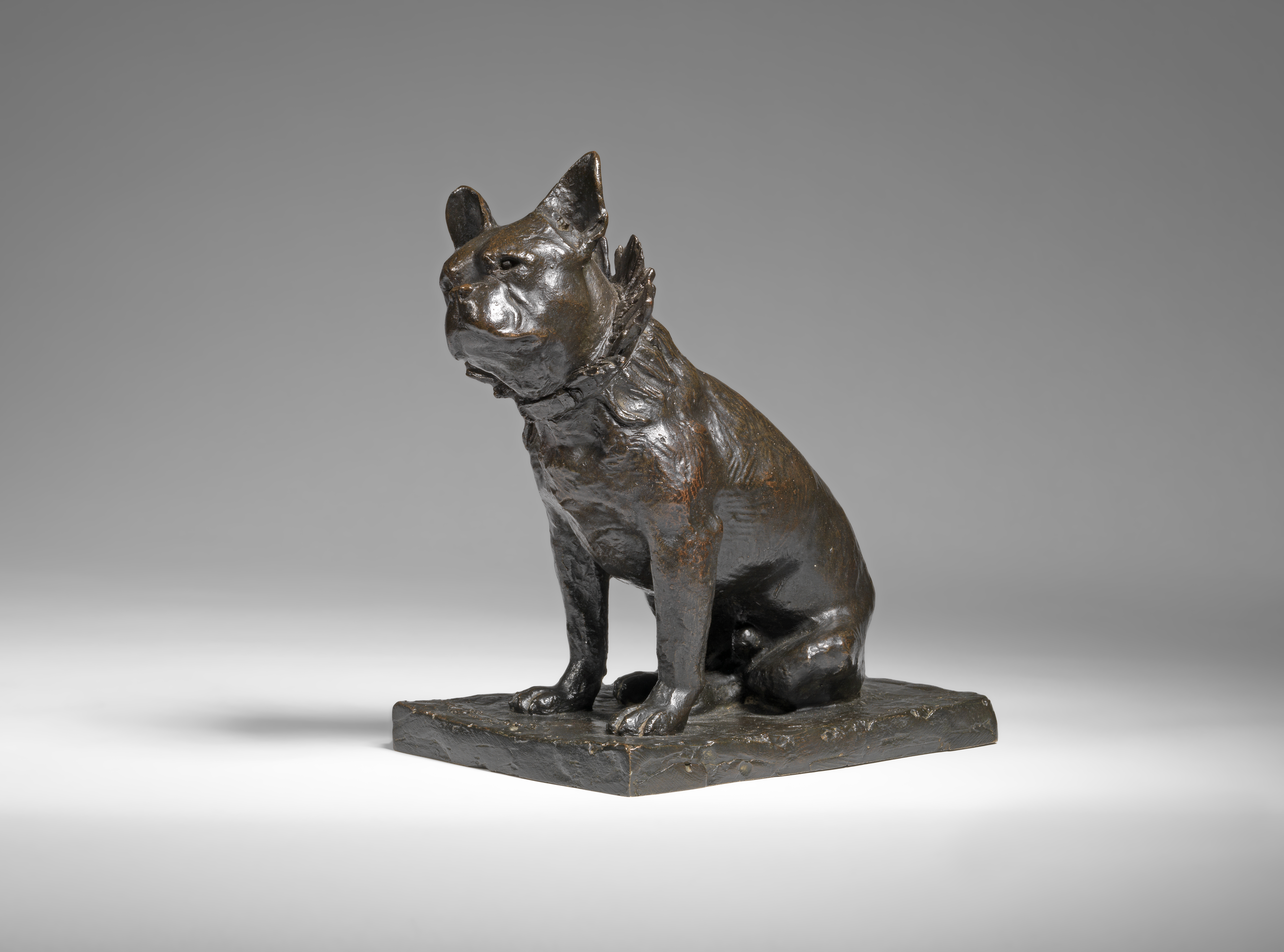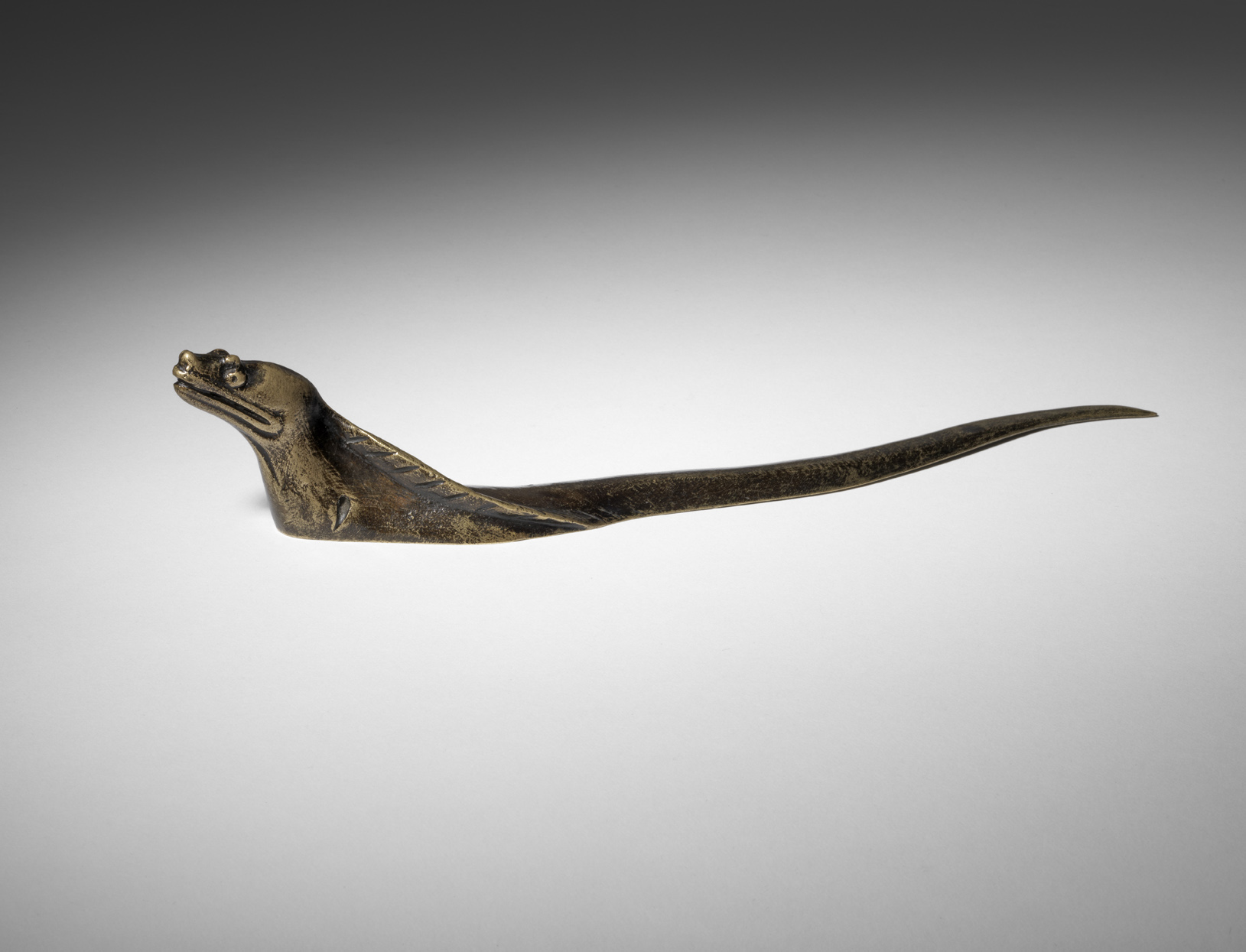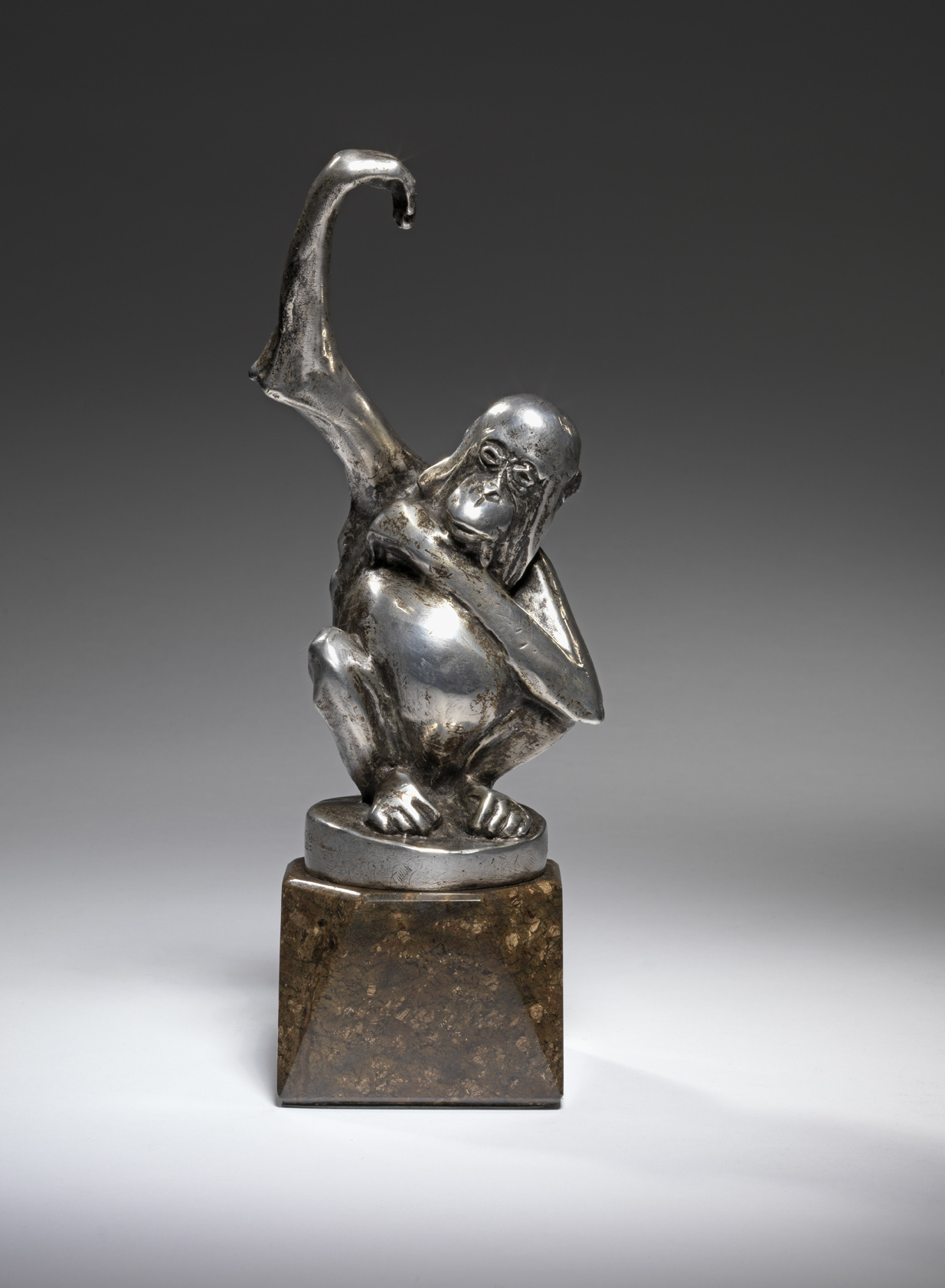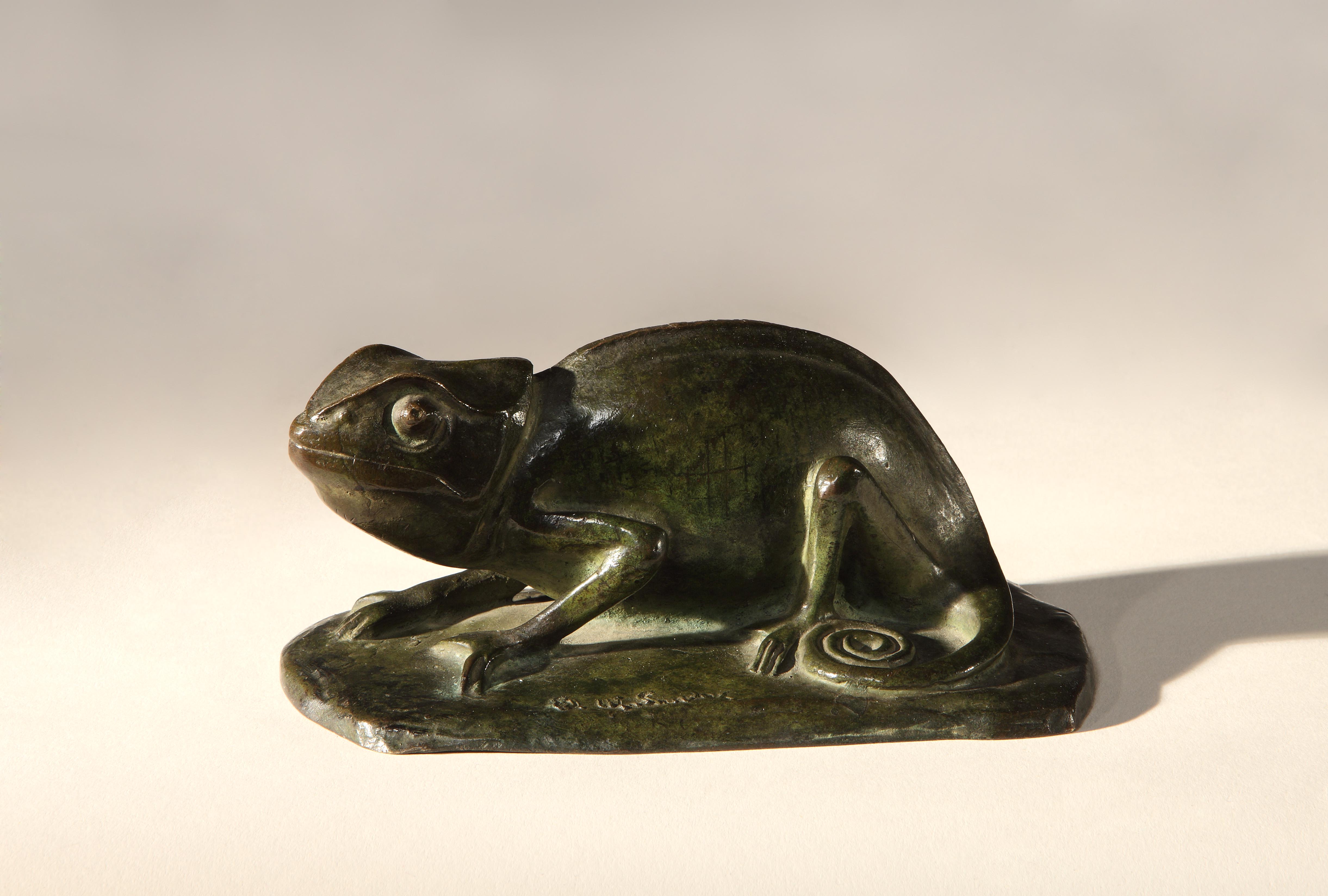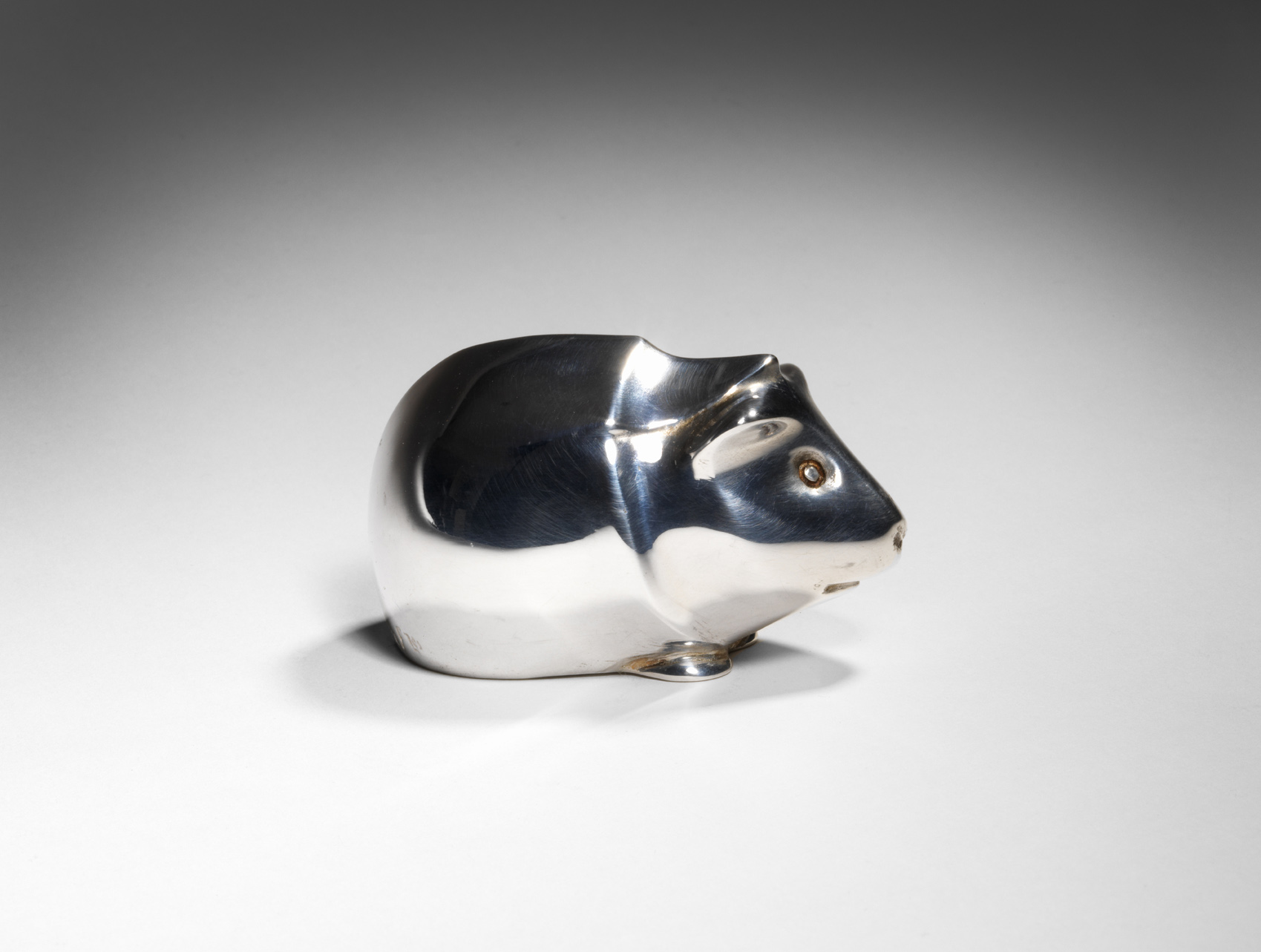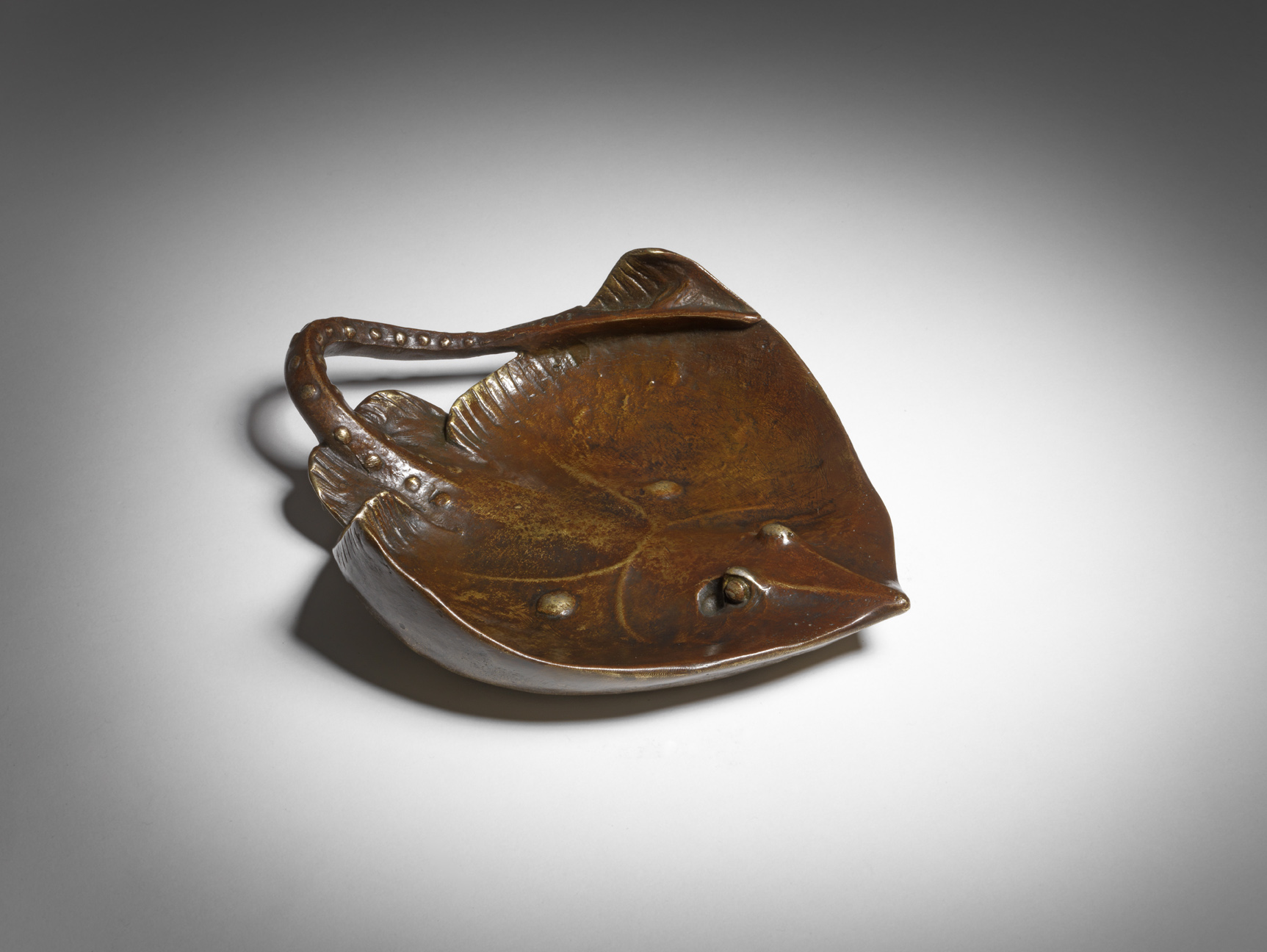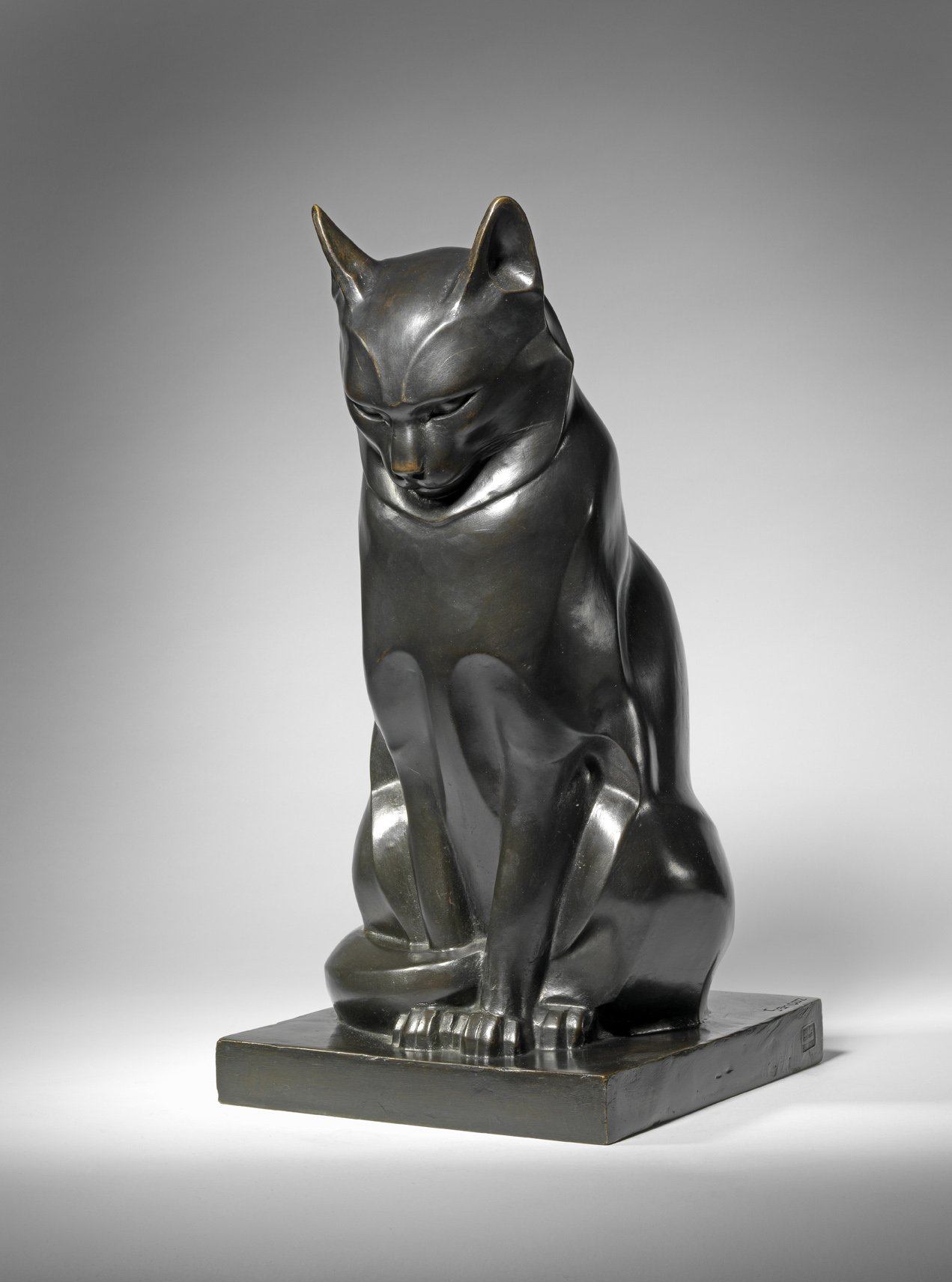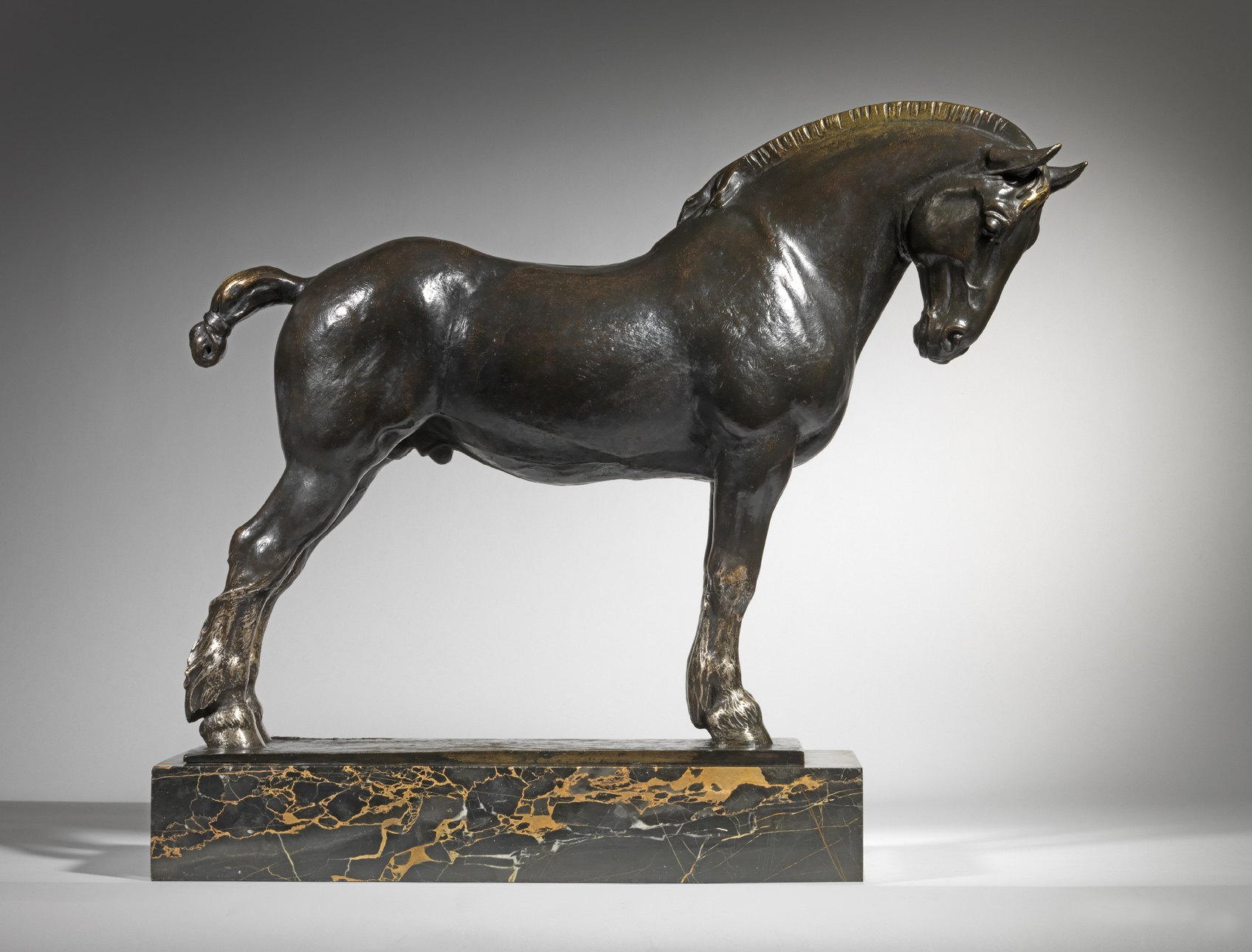
‘On prend une pierre, on devine l’animal qui est dedans et l’on enleve ce qu’il y a de trop’. Edouard Marcel Sandoz
Sandoz produced an enormous yet unique body of work encompassing a wide range of animals, the bulk of them imbued with his brand of stylisation. For me, he is undoubtedly one of the leading twentieth century Animaliers, and his work epitomises the differences between the realism of his nineteenth century counterparts and the stylised modernism of his contemporaries.
Like his compatriot and contemporary Pompon, Sandoz worked in series, making variations on birds and other animals, often combining them with semi-ornamental elements such as bowls or dishes, suggesting a use as a birdbath, bird table or other garden feature. In his work, animals can become handles of paper knives, bases of candlesticks, bookends, or other semi-utilitarian objects
Sandoz himself had two pet monkeys, called Joseph and Madame Putiphaz, who lived with him in his studio in Paris. He sculpted over 80 models of monkeys both single and in groups.
Of Swiss birth, Edouard Marcel Sandoz was equally recognised as an animalier sculptor in both France and Switzerland, and indeed internationally. Throughout his life he played a significant role in the community, for which he received important national awards such as the ‘Legion d’Honneur’.
Born in Bale and son of a chemist, Sandoz’s childhood was not particularly remarkable until he began studying under the guidance of Dr. Favrod-Coune in the village of Chateau-d’Oex, Vaud. It was here that he began drawing lessons and and developed an interest in sculpture. Stimulated and spurred on by a sculptural tradition stemming back to Michelangelo: that the artists role was to ‘peel away’ the excess stone to reveal the figure already within, he is quoted as saying, ‘On prend une pierre, on devine l’animal qui est dedans et l’on enleve ce qu’il y a de trop’.
Such was his progress in those early days with sculpture, that he later moved on to study at the Ecole des arts Industriels in Geneva from 1900-1903.This was a significant period in his development where he learned the importance of discipline and reflection on the past, in relation to his own work.
In 1906 Sandoz exhibited at the Salon de la Nationale des Beaux Arts for the first time. The works of art he showed were a painting entitled ‘Poulet Deplume’, and a small marble depicting the head of a girl. He married a childhood friend from Bale in 1909, and in the meantime his burgeoning career went from strength to strength. Sandoz’s success enabled him to follow a prosperous path to Salon recognition with pieces such as the group ‘Trois Pecars’ in 1912 (Collection Raisonne No.726), one of his first large scale marbles to follow in the grand Animalier tradition of the mid to late nineteenth century sculptors.
Perhaps the most famous of Sandoz’s works are his series of fish sculptures (cf. Catalogue Raisonne No. 1326-1606) which, after an intensive period of scientific study in Monaco 1923, illustrate a striking combination of anatomical detail and modern stylisation as well as a high level of technical skill.
During the 1930s and 40s, Sandoz was awarded some prestigious prizes for his sculpture such as the ‘Grand Prix’ at the Exhibition of Gand. A turning point with regard to his international status was his invitation to exhibit for both French and Swiss pavilions at the International Exhibition in New York, 1939. By this time Sandoz was working in conjunction with the Galerie d’art Malesherbes in Paris and exhibiting under the umbrella of Les Animaliers with other contemporary artists of the period such as Cartier, Rousseau and Guyot.
Sandoz died in 1971 at Lausanne, leaving a wide and exciting range of animal and figure sculptures. Throughout his career this sculptor seems to have placed a great emphasis on different types of medium. He was able to adapt his technique to work with bronze, glass, and porcelain alike, as well as wood, semi-precious stones and a variety of other materials. One of his great strengths lay in his ability to select the right medium for the right subject, thus enhancing the finished piece. Sandoz was astute in determining the chacteristics of the animal he was modelling and the elements and qualities of the material he was using, combining them to create a sculpture that was both innovative and forward looking and on a level of its own.
Artworks
View all Artworks >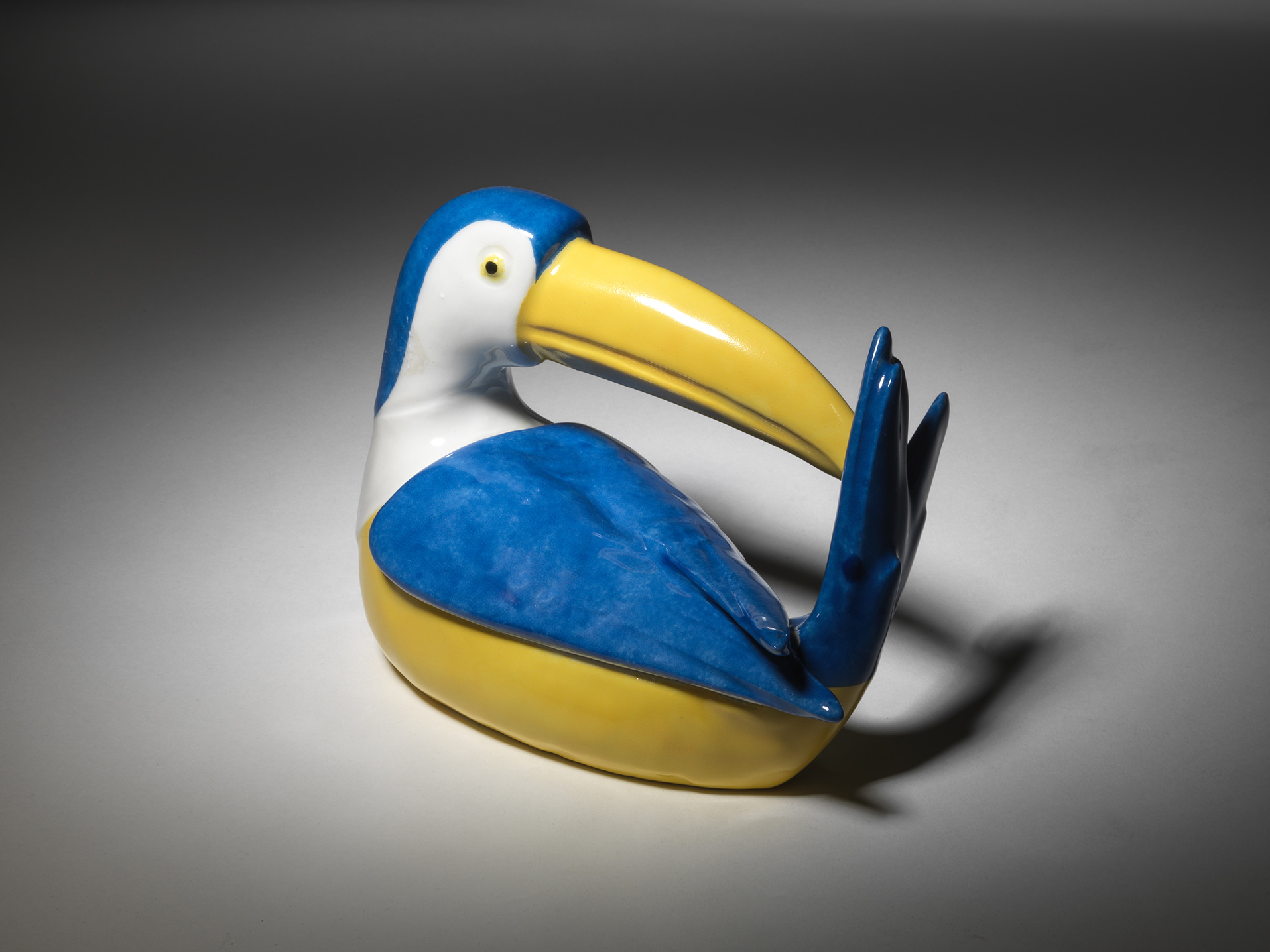
Toucan Bononniere, c. 1926
Edouard-Marcel Sandoz
A good quality, early twentieth century porcelain bonbonniere depicting a ‘Toucan’ by Edouard-Marcel Sandoz (Swiss, 1880-1971). This model was produced by the porcelain manufacturer Haviland, […]


